This is an article I wrote for The American Thinker.
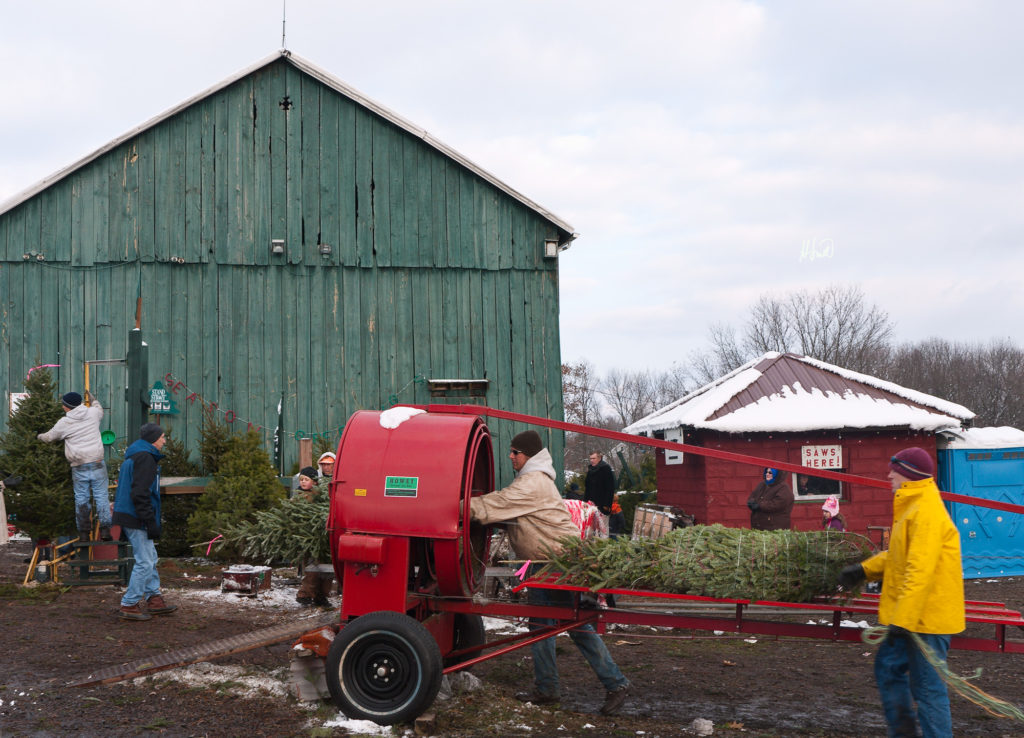
https://www.americanthinker.com/blog/2021/12/who_isnt_getting_infected.html
This is an article I wrote for The American Thinker.

https://www.americanthinker.com/blog/2021/12/who_isnt_getting_infected.html

St John’s at Russian Christmas (Nikon D 600, Nikkor 50mm F1.8)
In the last several months, I’ve had a fair number of changes to my equipment collection.
When I acquire something new, I like to write about it, whether it’s a “keeper” or not. We’ve talked most recently on these pages about the Fuji X Pro 1. Given some new developments involving the technology surrounding that camera, there will be more to say. Now however, I want to talk about a camera acquisition I also have alluded to recently, the Nikon D600.
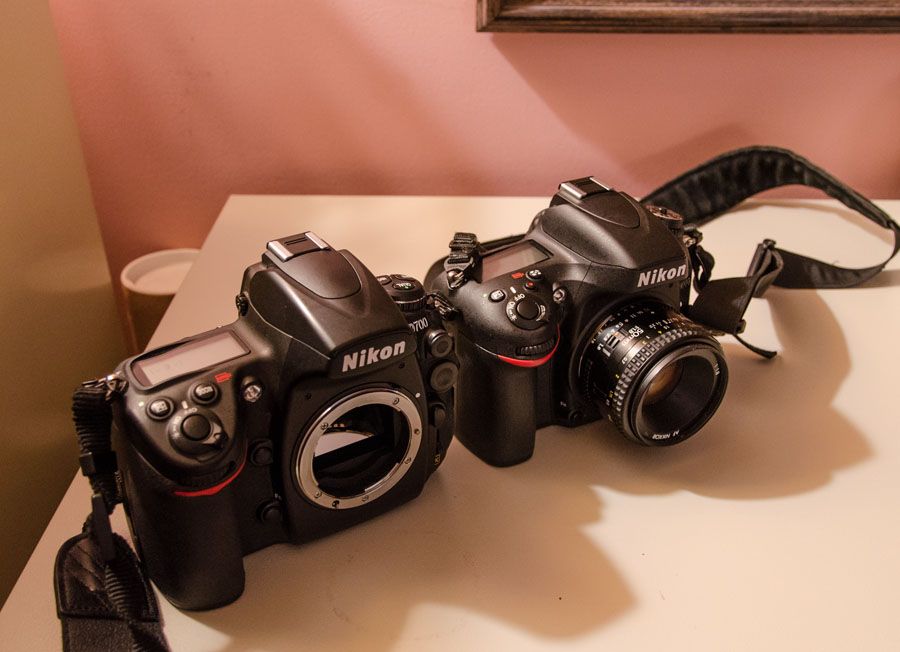
Nikon D 700 on right, D 600 on left (Nikon D 7000, 16-85mm f3.5 vr)
I acquired this device shortly before the X Pro 1, and was shooting it extensively up to the point where the Fuji arrived. As the Fuji was the older camera, I decided it would be more appropriate to offer my comments on that camera first, as I was already late in the game.
Now, on to the D600.
The D600 is closely related to previous Nikon DSLR designs, particularly to the D7000. Its body design follows a pattern seen in that “serious prosumer” camera bodies that Nikon has put out over the years. Happily, the specifications keep improving with each generation, to a point where they have become very credible professional tools on their own; less robust perhaps than the D800 or D4, but more than adequate for fairly heavy use. Now I am a somewhat leisurely landscape photographer, who will not be climbing in the Himalayas, or repelling off some cliff in the Amazon Basin. For me, these cameras are a nice combination of ruggedness, yet with reasonable weight.
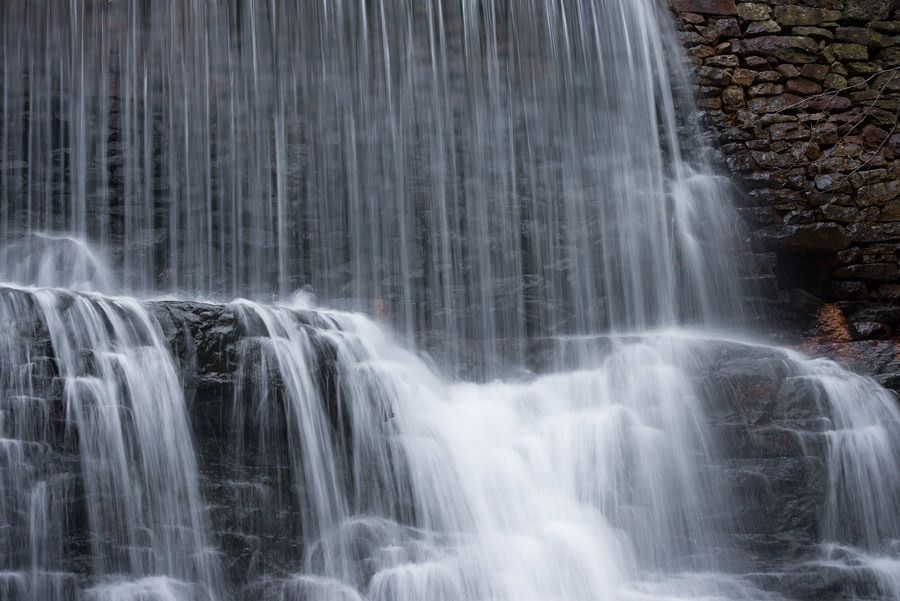
Cascade on “Shades of Death” Nikon D 600, Nikkor 28-70mm f3.5)
Perhaps the most important new feature on the body of the D600 is a locking button on the mode dial on the left upper top. This eliminates one of my main objections to that control style, vs. the three or four button knob in that location on the D700/800/D4 bodies. Every so often I will shoot with for instance, my D7000, only to find the mode dial has moved either to “program”, or to full manual; the latter setting particularly screwing up the exposure. With the D600, this should no longer happen.
There also some changes to the video controls on the camera, which are admittedly less interesting to me. When compared to the D7000, the D600 body is “puffed up” by about 10% visually. All of the good things about the earlier camera have been retained (and I really enjoy that earlier camera).
There are certainly some wonderful websites such as DPreview, where you can read an in-depth description of the camera functions, and menus. As always, I hope to convey to you the experiences of an “average” user and how the cameras features impact my photography.

Front Yard, January Sunset(Nikon D 600, Nikkor 50mm F1.8)
I have had a somewhat jaded approach to this camera. I admit being somewhat thrilled, but slightly intimidated, by the quality the sensor and its high-resolution. I’ve discussed here before that I have a less than robust collection of FX appropriate lenses. Other than some prime lenses, I own a 17-35 mm, f2.8, as well as the 70-200 mm f2.8. My best midrange zoom seemed to be a Tokina 28-80 ATX f2.8, which has not always been well reviewed but I always thought was quite sharp, at least on DX. I began to consider purchase of some serious glass, perhaps starting with the Nikkor 24 -70 mm F2.8. I looked through my lens collection to see what I wasn’t using, and could sell to fund this expensive purchase. The Tokina seemed a likely candidate for a quick eBay sale and I began to look for the box and packing materials.
But then it occurred to me that just maybe, I ought to consider shooting the D600 with the Tokina lens.
This particular lens, out of production now, is roughly as massive and heavy as the legendary Nikkor 28-70 mm F2 .8. The lens is beautifully finished with a black crinkle surface. Over the years its weight and size have tended to relegated to my storage closet as I have many DX lenses that seemed as sharp… and were a lot lighter. Nonetheless, I figured I ought to at least give it a try before selling it. I mounted the lens on the D600 and went hiking (with a tripod) in nearby Nescopeck State Park.
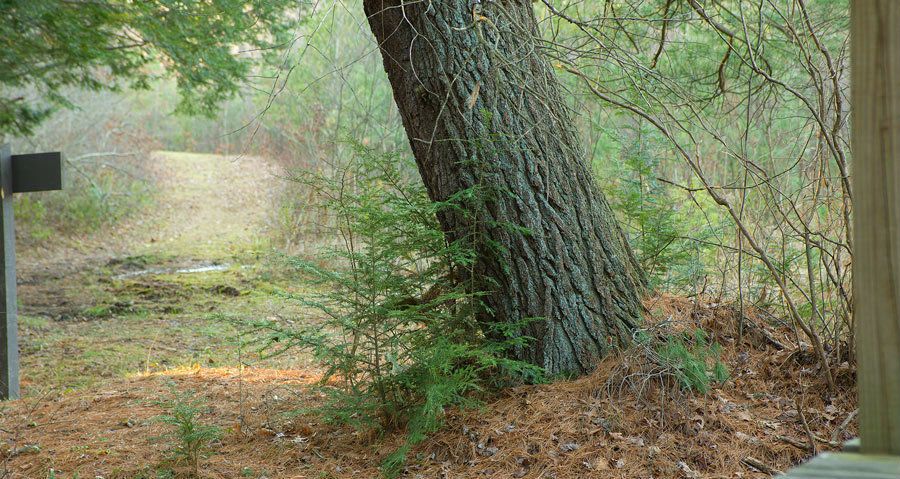
Pine on the Creekside Loop(Nikon D 600, Tokina 28-80mm f2.8 ATX Pro)
All I can say is wow! To my eye, this is a very fine FX lens, and is extraordinarily well matched to the 24-megapixel Nikon sensor. Contrast and detail are outstanding even at the edges of the frame. I say this, even after shooting the extraordinary 60 mm Fuji “X” lens. I’m not it selling it now.
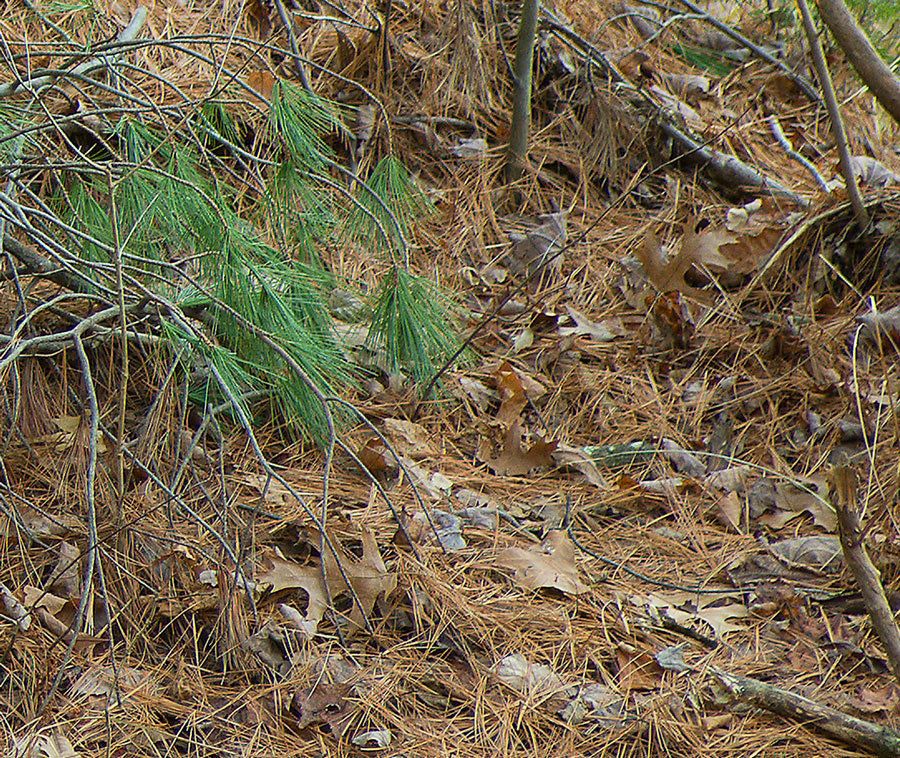
100% of above, lower right corner
I shot the 17-35 mm lens which is certainly excellent, though not quite so clear edge to edge. It’s still a wonderful optic, and to me it should certainly not be discarded on acquisition of the D600/800. The 70 – 200 mm VR lens (the first version) also to my eye looks fine, very sharp in the center and only slightly less so at the edges. Generally with a zoom of that range, I don’t care about the little vingnetting described by reviewers (which is easily corrected on processing), or whether the corners are absolutely sharp (version 2 of that lens is said to be better optimized for FX). For now I see no reason to upgrade to the newer version. That having been said, the main problem with all of these lenses is that they are seriously large and bulky. You’ll need a serious backpack to carry good FX glass, plus a tripod for great remote landscape photography.
There is another option. With the Nikon primes I own, the D 600 is wonderful. Shooting for instance with one of the excellent 50 mm Nikkors, is a delight. A handful of primes would seriously reduce what you would carry on your back.
I did acquire with a camera the “kit lens” the Nikkor 24-85mm f/3.5-4.5G VR lens. This is in fact a fairly reasonably sized midrange zoom with image stabilization. I’m not a lens snob, and I’d hoped this lens would be similar to the 16 – 85 mm VR DX glass, which is essentially parked on my D7000 and is quite sharp and contrasty. Unfortunately at least my copy of the lens was lackluster at best, and I returned it. Interestingly, the little Nikkor 28-70 f3.5 I wrote about here, looks better to my eye on the D 600, than the newer lens.
I shot some comparison photos as is de rigueur for these camera tests. I shot my usual test subjects with the D700, the D600, both with a Nikkor 50 mm f1 .8, and compared them to the X Pro 1 with its 35 mm f1 .4, (which on DX has nearly the same field of view)both at F 5.6. For the record, I developed them using the same raw developer (which currently cannot currently be named) which is said to be the best developer in particular for the Fuji files and also great for Nikons. I did not always use standard settings, but attempted to best optimize each image.
Here’s 100% crop of images I shot at ISO 320 on the X Pro 1 and the D 600
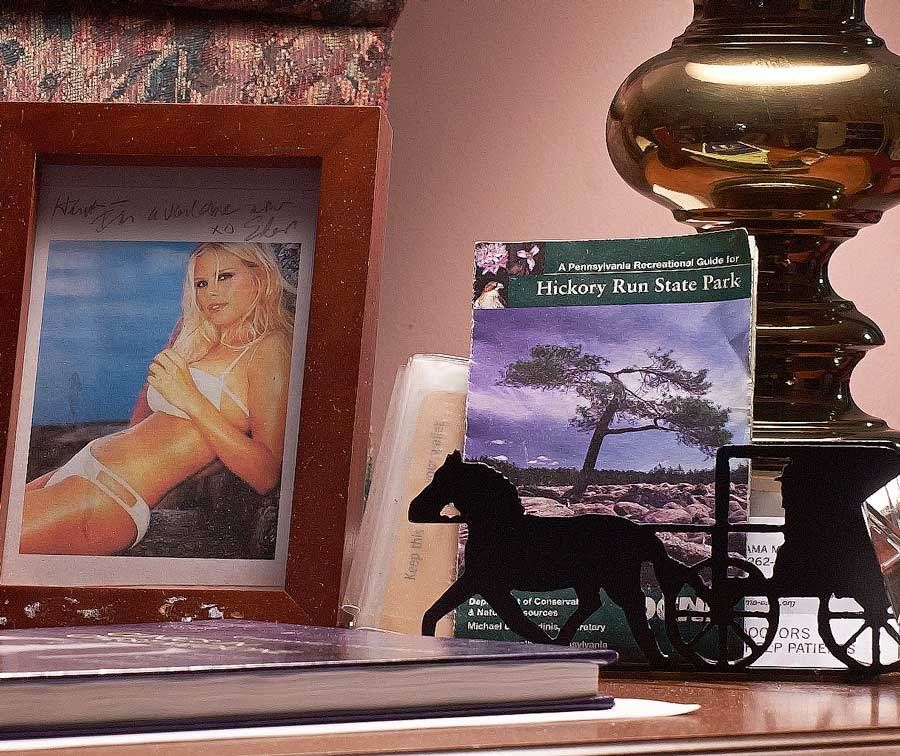
ISO 320(Fuji X Pro 1, Fuji X 35mm f1.4)
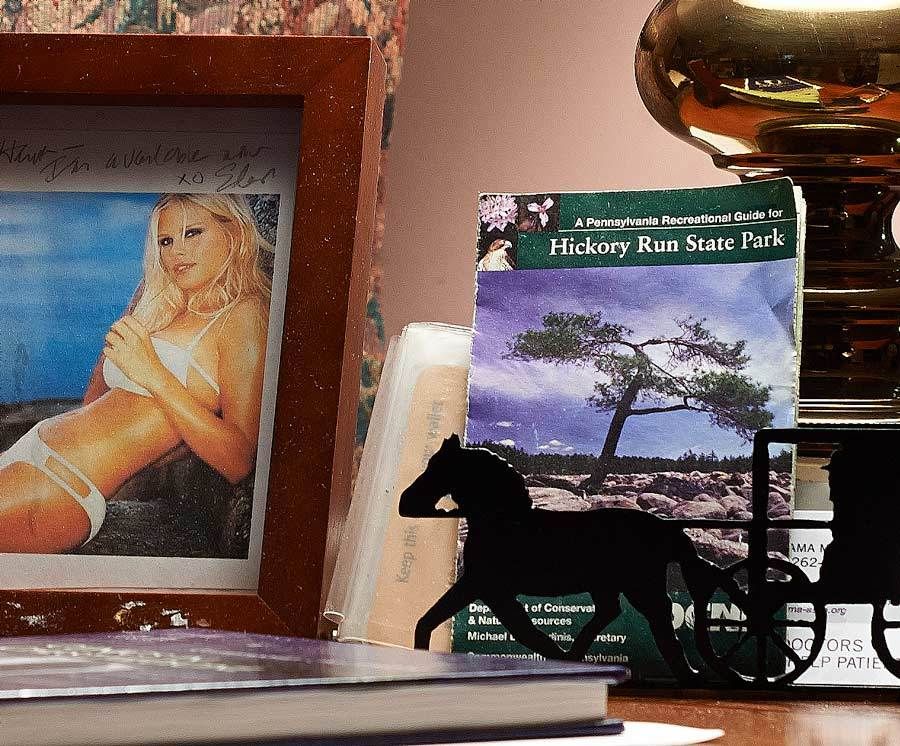
ISO 320(Nikon D 600, Nikkor 50mm F1.8)
Here’s a set at ISO 3200, including shots from the D 700:

ISO 3200 (Nikon D700, Nikkor 50mm f1.8)
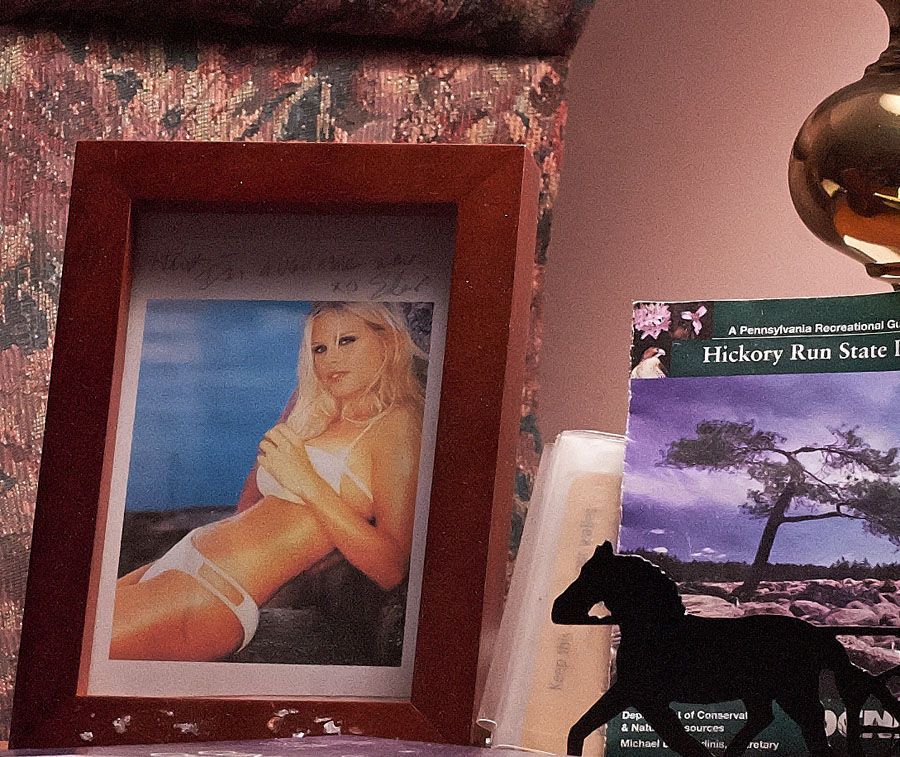
ISO 3200,(Fuji X Pro 1, Fuji X 35mm f1.4)
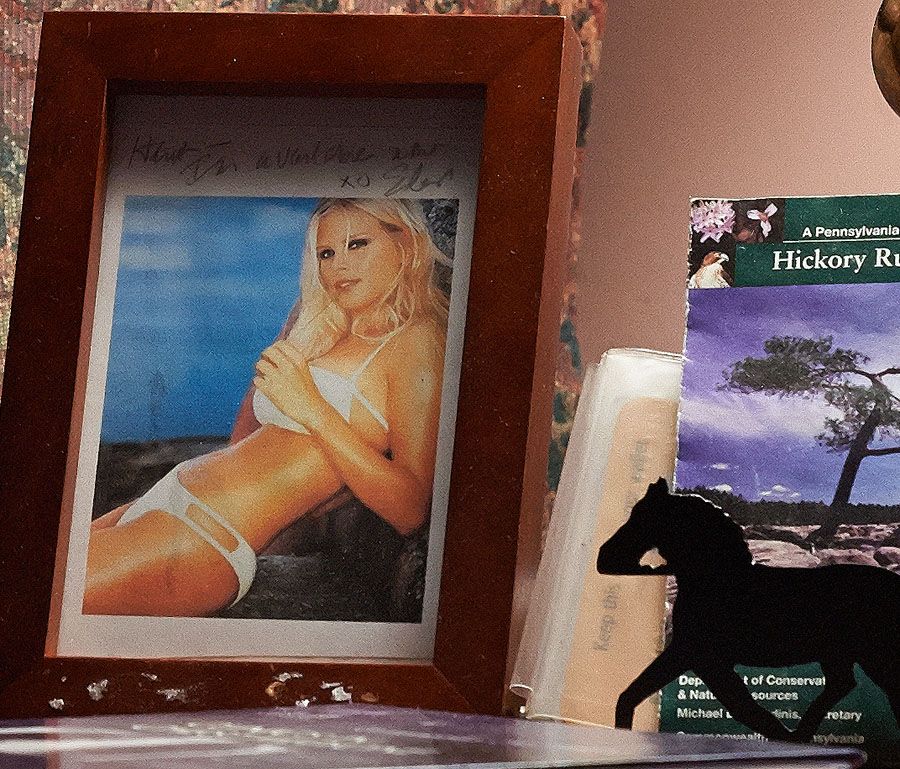
ISO 3200 (Nikon D 600, Nikkor 50mm F1.8)
In either the low or high ISO images, I think it’s clear that the Nikon has an advantage in resolution.
I think the high ISO noise rankings (higher is better) would be D 600 > X Pro 1 > D 700.
I’m impressed with the Fuji. The difference in resolution between it and the Nikon seems clearly less than the eight megapixels the sensor sizes would suggest. This is probably the cause of the removal of the anti-aliasing filter on Fuji. Again, I think the high ISO images suggest that the D600 is better than the Fuji, which is slightly better than the D700. That camera, even allowing for the different image magnification of its smaller files at 100%, clearly has less resolution, and noise suppression than the other two. It’s amazing how good these imagers are getting.
I’m actually rather impressed that the Fuji does not lose ground to the Nikon D600 as the ISO numbers increase. The newer Nikon in my mind however, is a clear winner here.
I should also mention that in playing with the files, the dynamic range of the camera seems very high. This camera appears to have some of the same abilities to lift the shadows as its older sibling the D7000. It also does a very nice job at highlight detail retention. In this regard it feels almost like my old Fuji S5 pro. On a raw image, you can dial back what appears to be a blown out sky or snowfield, and find that there is significant detail available.
One issue with this camera has to do with the autofocus. There been reports that the performance of the autofocus on this camera is mediocre, compared to cameras higher up in the Nikon line. To me the autofocus always functioned well, but my main frustration was the rather restricted area of autofocus points in the viewfinder. This is very frustrating for landscaping. It can be very difficult to bring a focus point for instance on a spot in the periphery of the image. Then I realized that a simple solution for this is to move to “live view” while, particularly on a tripod, which brings to bear the camera’s very adequate contrast detection autofocus system which can cover the entire frame. Problem largely solved.
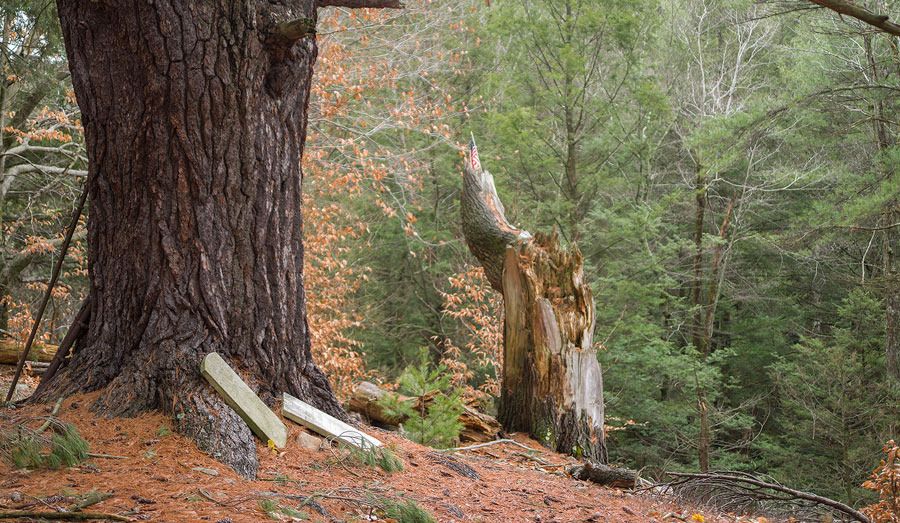
Old Cemetery, Hickory Run (Nikon D 600, Nikkor 28-70mm f3.5)
One other issue I think deserves discussion. Some very thoughtful photographers have written about the importance of using careful shot discipline, if we’re to extract all of the high-resolution of these devices. As the megapixels increase, it seems logical that we may increasingly rely on camera stabilization devices, whether physical or electronic, in order to prevent motion blur. The larger mirrors in the full-frame digital SLRs such as the D600 can cause issues with camera motion when they swing up and out-of-the-way on shutter activation.
Also with FX Nikon cameras is that the few image stabilized lenses available tend to be rather large and not particularly fun to carry around ( excepting the little Nikkor 28-70).I did do some free hand shooting with the D 600 and noted that it was fairly difficult at times, to prevent motion blur, unless one used at least a monopod. Now I don’t shoot thousands of frames every day, and there are pro shooters who are so steady, and have such good technique, that this may not be a problem for them. For me however, I need to be careful.
For these reasons, I believe that mirrorless devices such as G series Panasonics, and the Fuji X cameras, which are smaller than full-frame DSLRs and offer lenses with image stabilization, will likely be my choice for free-hand shooting. I find, for instance, that the mirrorless cameras are much more forgiving in this setting. I get much less motion blur with even the non-stabilized 60 mm lens (90 mm equivalent) on the X Pro 1 then I do with shorter lenses on the D 600.
At any rate, that Nikon D600 is a wonderful camera and will add significantly to most shooters capabilities, both out in the woods, on the street, and in challenging low light situations. For me the camera’s weatherproofing makes it a natural choice for use when it’s raining and snowing, and its small size and lightweight but sturdy build make it a good companion out in the wilds. The only disadvantage of the FX format is the need for larger lenses, and some sort of camera stabilization.
When you comply with its needs however, the results are wonderful.
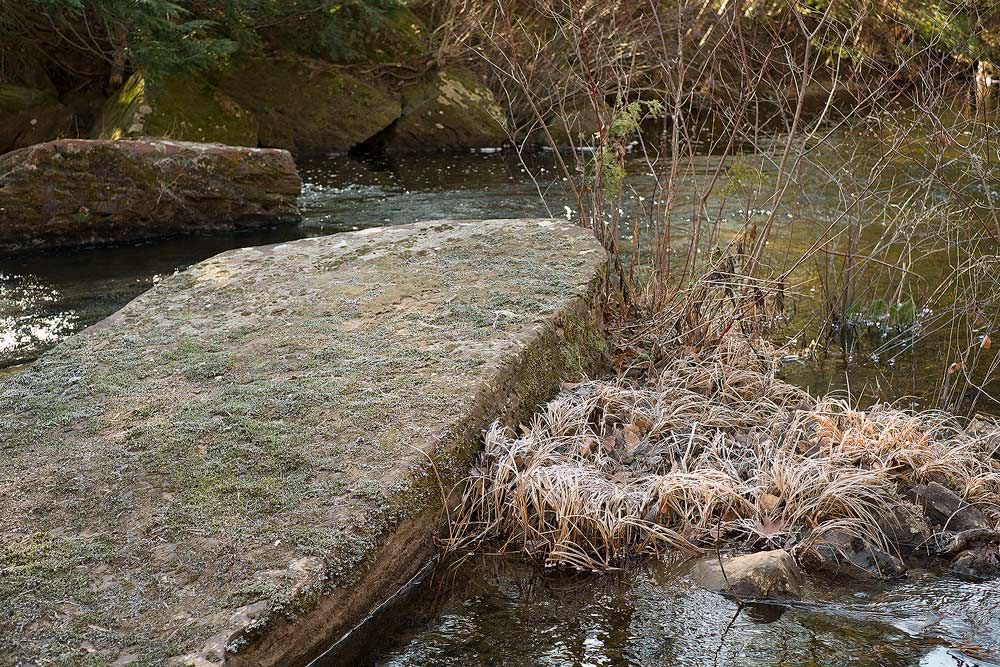
Rocks in The Nescopeck (Fuji X Pro 1, Fuji X 35mm f1.4)
I’m becoming a Fuji guy again.
I shot Fujifilm cameras for many years. I started with an S2, and shot later with an S3, and S5.
I always loved the gorgeous output of their unique imagers, despite the quirkiness of the Nikon bodies they resided in (relative to the comparable Nikon DSLR of the time).
Anyway, after the S5, Fujifilm stopped making Fuji/Nikon hybrids, and I began using Nikon cameras as they became dominant in sensor technology.
I’ve written on these pages, how the purchase of the Fuji X100 reinvigorated my photography for reasons that I still don’t completely understand. With the purchase of the Nikon D600 (soon to be reviewed) and the sale of my Fuji S5, I was happy thinking that I have created the perfect collection of equipment for my various photography needs.
I was content. The combined capabilities of my D600, and X100 in fact were making my D700 somewhat redundant. I was perusing Ebay to obtain the probable sale price of that camera, when I came upon another lightly used camera body for sale. The auction was nearly ended and the price of the camera was still very tempting. I placed what I considered to be an unreasonably low bid assuming (and perhaps wishing) that I would not win. After all, I really didn’t need this new camera. For better or for worse however, in an hour my cell phone alerted me to an e-mail I had received, informing me that I was now the proud owner of a Fuji X Pro 1.
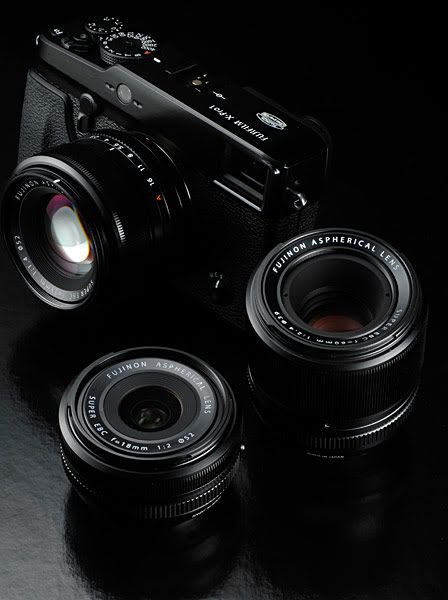
Fujifilm X Pro 1 (Photo by Fujifilm Marketing)
I’m receiving the news of my purchase, I immediately ordered from B and H photo, a 35 mm F1.4 Fuji X. lens so that its delivery would coincide with the arrival of the body.
Now, I had originally been somewhat lukewarm about the X Pro 1. I handled the body in a camera shop in Boston several months ago. To me it felt somewhat light weight and not as substantial as my X100. My error however, was not handling it with a lens. When the 35 mm arrived along with the camera, I mounted the lens and immediately noticed the nice weighty feel of the combination.
I have subsequently acquired the Fuji 60 mm lens and I’ve been shooting for long enough with the system to have formed some definite impressions.
The X Pro 1 in use is a significantly larger camera than the X100. I still prefer that camera to use as an indoor events camera given its small size, its 35 mm (equivalent) lens (a focal length not available yet in the Fuji X lens line), and its very quiet shutter. The X Pro 1 is also very capable in these situations, when the image calls for a longer focal length (I don’t yet own the 18 MM as I may wait for the Fuji X 18 – 55 mm f2.8 optic to be available).

X 100, X Pro 1 in outdoor trim (Fujifilm F 31)
Call me a Fuji fanboy, but I really enjoy using this camera system.
First and foremost, particularly with firmware 2.0, most of the early foibles of the X Pro 1 (and X100 before it) have been dealt with. The ergonomics of the camera are a nice improvement over the X100. Once again we see the lack of a mode dial, its function replaced with the rotating shutter speed dial, and aperture ring on each lens. Each control has a position marked “A”. For instance: when A is selected on only the shutter speed dial, the camera is in aperture priority unless A is also selected on the aperture ring at which point the camera is in full auto mode. The only problem with this, is that you need to be alert for the possibility that the shutter speed dial( or aperature ring in shutter priority) accidentally moves off the “A” setting, which then places the camera in full manual mode.
There is a new button near the thumb rest, labelled “Q” which gives immediate access to the most commonly use settings of the camera. This is very helpful. The thumb wheel, now rotates completely that seems mainly useful for controlling camera functions and when pressed in, accessing a magnified viewfinder for manual focusing.
The autofocus button, though still poorly located on the left side of the camera, is it least now at the bottom of the stack so that it can be found more quickly. I find though I still have to take my eye away from the viewfinder to change the focus point, something that is unnecessary for instance, on my G-series Panasonic cameras.
Then there’s the dual viewfinder. As with my X100, I tend to use electronic viewfinder more than the optical one, but the latter is useful when shooting action, as it allows you to observe a subject that is “out of frame” and time when he will be “in frame” so that you can push the shutter at the appropriate time. The lack of a diopter adjustment is a complete mystery. Apparently you can buy screw in viewfinder lenses and change the diopter but why Fuji excluded the adjustment feature is beyond my comprehension. Happily the standard viewfinder works well when I wear my glasses.
The autofocus performance is a common topic of conversation for reviewers of this camera. I find it about as reliable as the X100, which is to say not as reliable as my better Nikon bodies, but adequate.
A major reason to buy one of the Fuji interchangeable lens cameras is the quality of the lenses offered. Both the 35 mm, and 60 mm lens are bitingly sharp in a way that I have not often seen in other lens/camera combinations. The 60 mm is particularly so. I cannot wait to use it for some upcoming model shoots I have scheduled.
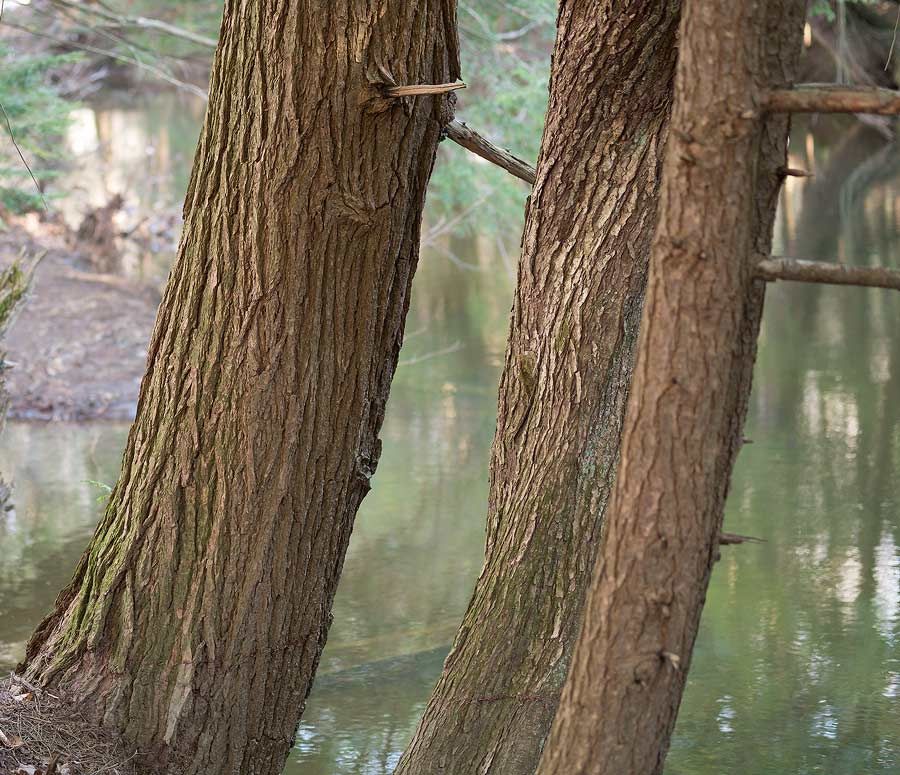
Hemlocks on the Nescopeck (Fuji X Pro 1, Fuji X 60mm f2.4)
Another issue with this camera is the supposedly poor state of raw file interpolation currently offered by the major photo software companies. As most readers know, the X Pro 1 has an unusual sensor with the kind of randomization of the colored photo sites that allows it to go without an anti-aliasing filter.
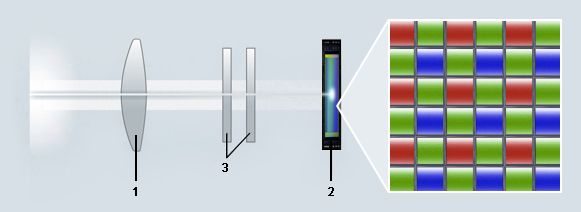
# 3 is the AA Filter (Fujifilm Marketing)

AA filters are used to prevent color moiré that is caused by standard Bayer (nonrandom) imager designs when they react with certain repeating image pattern (a picture of a window screen, for instance might provoke color moiré). Unfortunately, AA filters prevent moiré by adding a blur to the image which can significantly reduce apparent resolution. The X Pro 1, because of its “random” sensor design, needs no such filter. Because of this, the resolution of the imager, relative to its 16 million photo sites, is very high.
Though I have seen some of the colors smearing artifacts others have described, overall the files that I am looking at, processed in Adobe Camera Raw are gorgeous, with very fine detail, comparable in some ways to the files from my D600. I can’t wait until the raw converters are finally optimized for the output of this unusual imager.
High ISO performance is superb; at least equal it seems, to the D600 in my use. The latter is better than my D700 ( D 600 review coming soon), one of the reasons that the latter body may soon be for sale. The fast prime lenses, both of which remain sharp wide open, amplify the cameras low light capability.
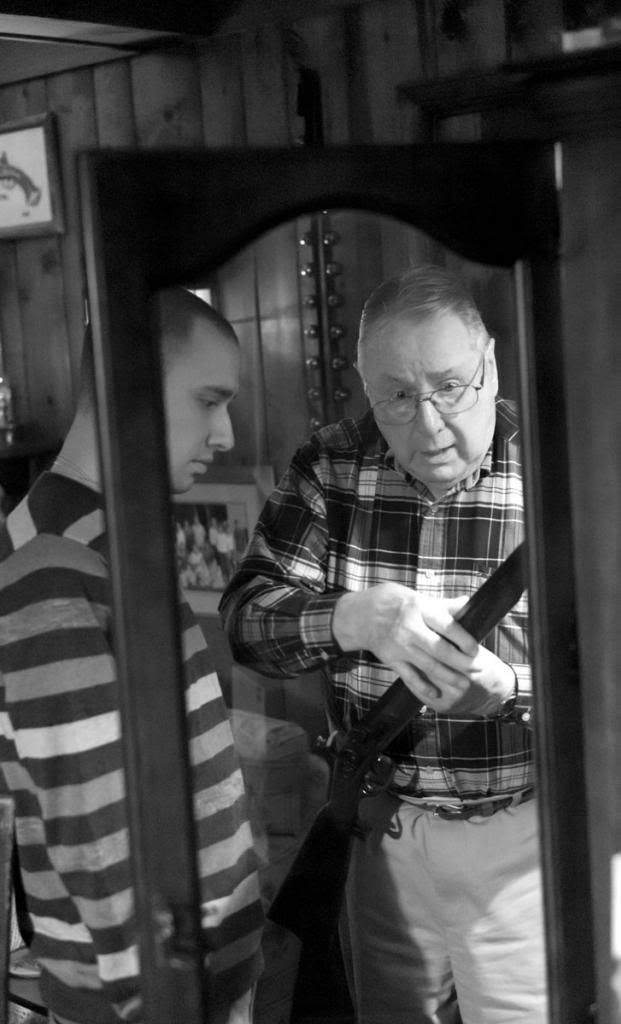
Dad and Mike (Fuji X Pro 1, Fuji X 35mm f1.4 ISO 3200)
Then there is the great intangible, the “Fuji color” tonality that made me a fan of their cameras since my S2, purchased in 2002. It is here once again. There are multiple film modes, which change the color balance of the jpgs, but the RAW files appear on my monitor with beautiful skin tones.

Yours Truly, with Calendar Kids (Fuji X Pro 1, Fuji X 35mm f1.4)
The rich reds and greens help to add “pop” to landscape images.

Green Trees at Arbutus Peak Barrens (Fuji X Pro 1, Fuji X 35mm f1.4)
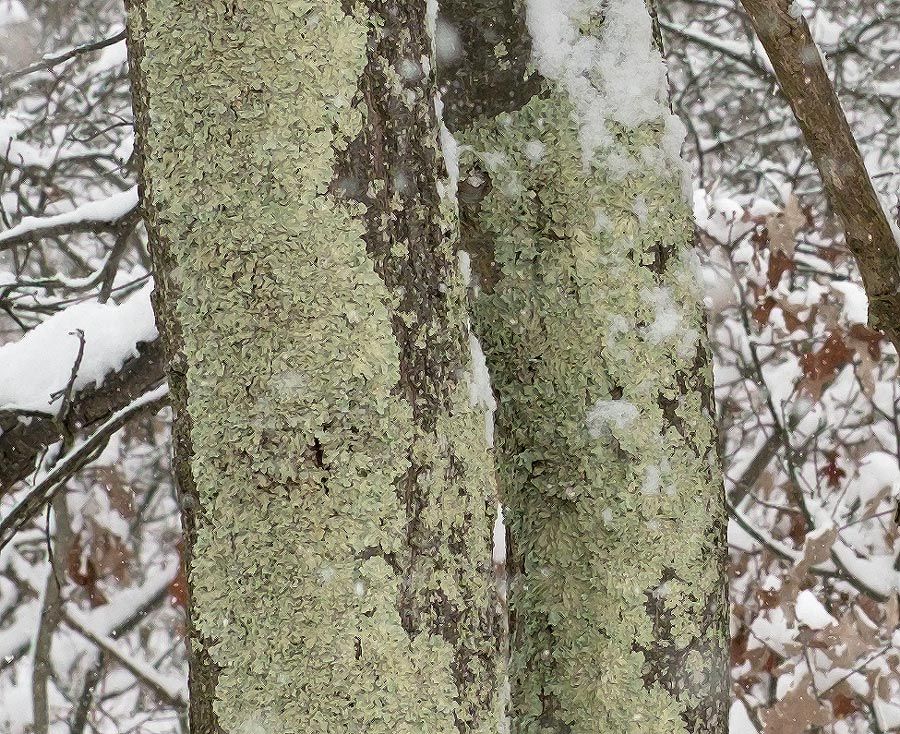
!00% crop of above
So I’m definitely adding this camera to the tools I use. So far, I keep it with the 35mm (52mm equivalent) attached, in a bag with the X100, and use each for the focal length I require at the time. I suspect that the Fujis will be my primary photographic tools for the near future, with the superb D 600 relegated to on-tripod landscape work (given the substantial lenses it requires). I will keep the D 7000, for sports and wildlife. The Panasonic GH1 will be useful for casual shooting, or high-risk situations where loss of the aging camera would not be a financial disaster.
So… anybody want to buy a lightly used D700?

Campus Tour in Harvard Yard (Fujifilm X 100)
From a photographic standpoint, If not meteorologically, autumn 2012 has come to an end in this part of the Northeastern US.
Aesthetically, it was a pretty good season this year. Some of you may recall my complaints about the foliage last year. I think last year, the fall colors were adversely affected by the very wet conditions we experienced in the late summer and fall in 2011 (remember Hurricane Irene).

Yellow Maple, Lackawanna State Forest (Panasonic GH1, Lumix 20mm f 1.7)
This year was much more normal, with maples and oaks producing strong red foliage to compliment the yellows and oranges of other species.
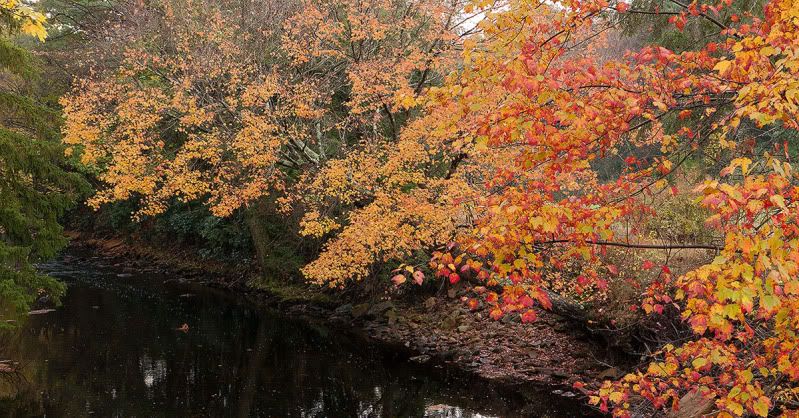
Color on the Nescopeck (Panasonic GH1, Lumix 14-45mm f 3.5)
The foliage turned fairly early this year. Our usual peak, here in Northeastern Pennsylvania occurs in mid October.
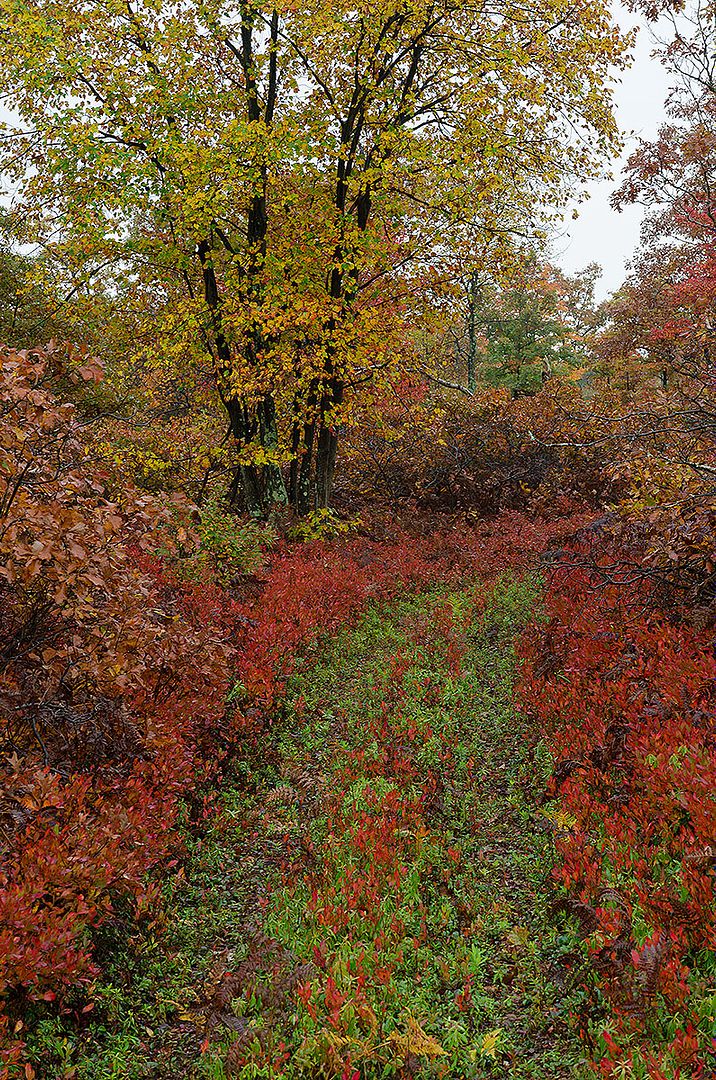
The Barrens Path in October (Nikon D 7000, Nikkor 16-85mm f3.5)
I started shooting up on the Pocono plateau in late September, and finished in the valley in late October.
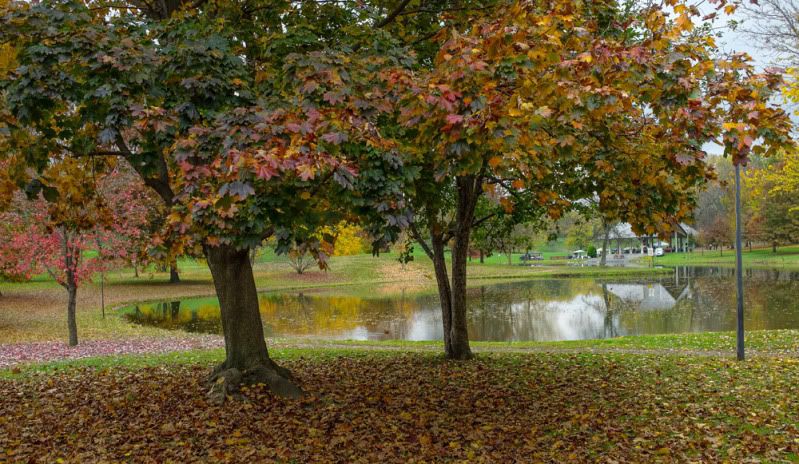
Kirby Park, Late October ( Fujifilm X 100)
The fall shooting came to a rather abrupt end with “super storm” Sandy. In our region, fortunately, that storm’s impact was quite modest (our hearts go out to those who are still struggling to rebuild). It did however strip the remaining leaves from the trees and thus abruptly end the autumn shooting season.
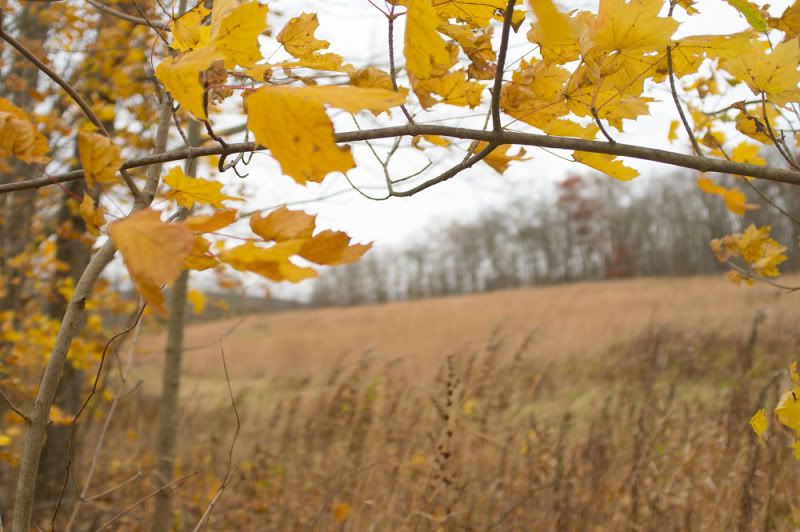
Sandy’s Early Winds (Fujifilm X 100)
Not even the river valleys had any residual color.
And then, I travelled to Boston, so that my son could visit prospective colleges. There, autumn was still very much in progress. It was like a reset.

Wall and Maple, Cambridge (Fujifilm X 100)
For now however, in the Appalachians of Pennsylvania, shooting opportunities will be limited until the first snow falls.
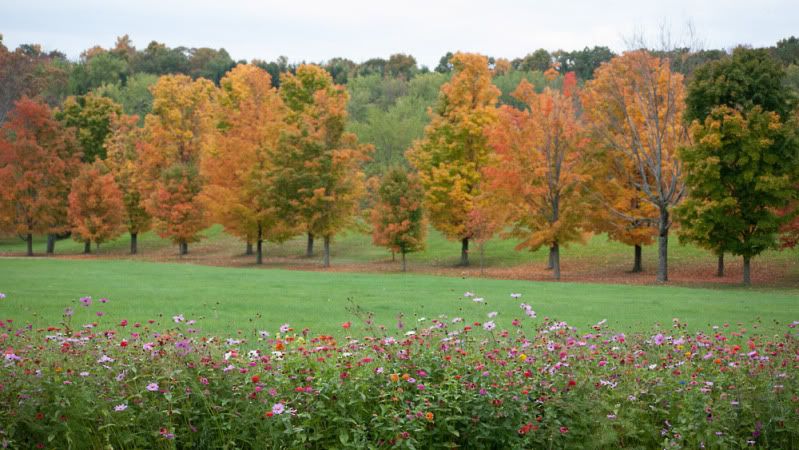
A Line of Fall Maples ( Panasonic GH1, Lumix 45-200mm f4)
Amazon is a wonderful retailer. I thought this as I printed off the return labels for my latest purchase from them.
They make it very easy to return things, which I think sometimes is a service under-utilized by those of us who frequently purchase electronics and particularly cameras. Newer is not always better. It is important to be able to discern when a new purchase will actually improve your ability to actually capture images, vs. when the new item merely answers need for something new and novel.
In September, I found myself in a mood to buy a new piece of camera gear. I definitely “get the itch” once in a while, though often, if there is nothing new and compelling on the market, I try to resist.
I had been awaiting several model introductions. In terms of my micro 4/3 gear, I’ve been shooting the Panasonic GH1 for several years now and began to think I would like an upgrade. I’ve been looking at the Olympus OM-5. Certainly it receives rave reviews, and its image quality is apparently first-rate. My problem is that I do not believe the kit lens (the 12 – 50mm F3.5 – 6.3) is the best optic to purchase for the system, and body only OM-5’s were at the time, difficult to find. So I decided to wait for the GH2 replacement.
This replacement was announced at Photokina several weeks ago. The GH3 has several features we’ve been waiting for including a weather-sealed body and apparently a higher quality sensor. For me however it has several critical flaws including the loss of the multi aspect feature of the previous series sensor (allowing 16:9 crops without much resolution loss). More importantly it is significantly bigger than the previous series camera which completely negates one of my favorite features of the G-series, mainly their diminutive size. So for the time being at least, the GH3 is “off the table”.
So I did some searching on the web on the various 4/3 bodies, focusing on features and image comparisons. I read multiple reviews and after some deliberation, decided to give my current cameras replacement, the GH2 a try. This camera was a mild refresh of the GH1, with at high-resolution sensor (16 vs. 12 mega pixels) better video which is not really an issue to me, and a touch screen interface on the LCD. The best price I did find was on Amazon, so I ordered it up.
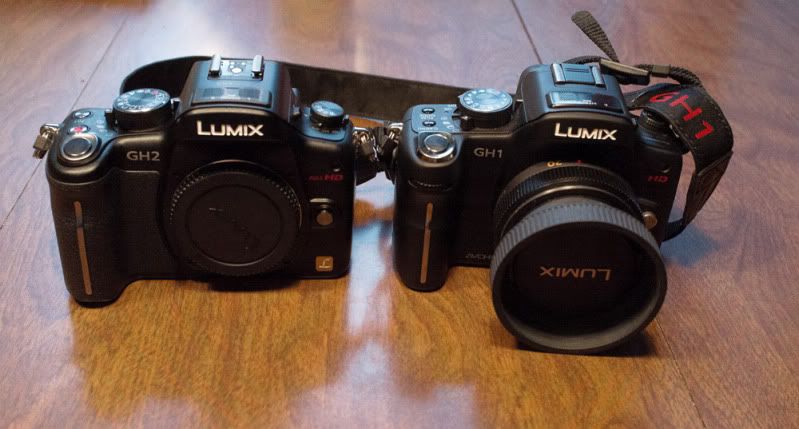
Both Cameras (Fujifilm X-100)
It arrived several days later, on a Friday afternoon and I look forward to spending a weekend shooting some early autumn foliage with my new acquisition.
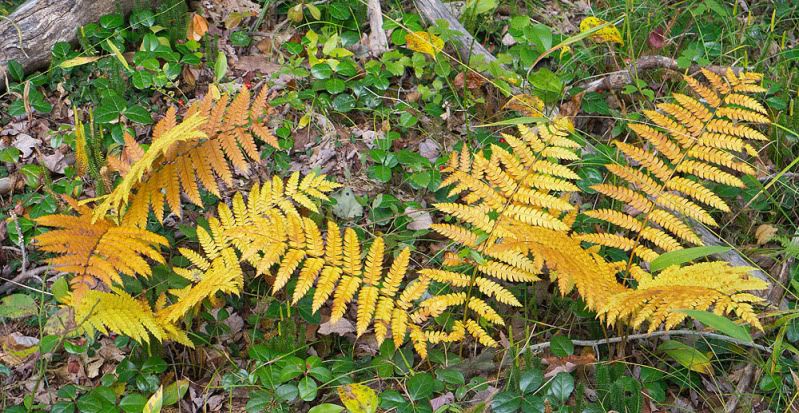
Dancing Ferns (Panasonic GH2, Lumix 14-45mm f3.5)
The first thing I noticed was that the new body was much more “plasticy” than my GH1. As the construction of the newer camera is said to be the same I didn’t completely understand this at first, until I examined the old body in comparison. Until the GH2, G-series cameras were covered entirely in a rubber coating that was extremely tactile, and managed to obscure construction of the body beneath, which given the density the camera almost feels metallic. The new camera offered no such solutions and seemed cheaper…not to mention more likely to slip out of one’s grip.
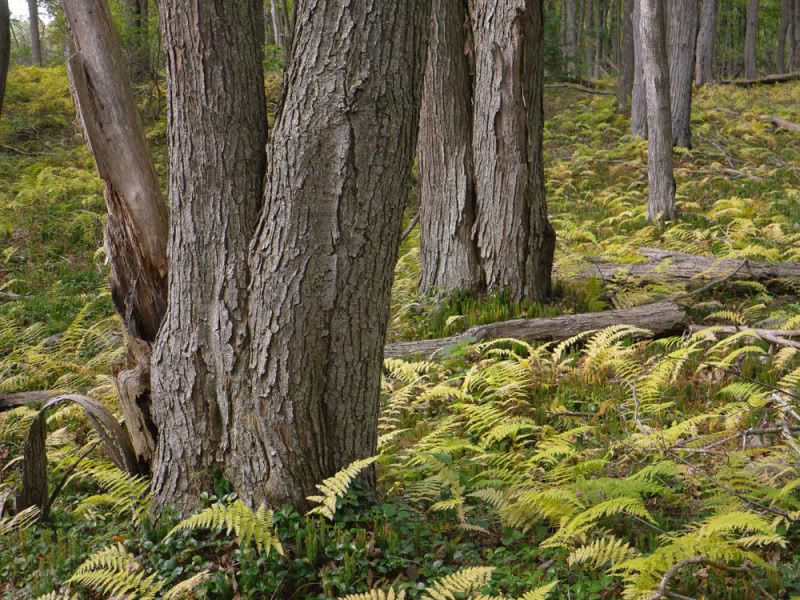
Maples on Fourth Run Trail( Panasonic GH2, Lumix 14-45mm f3.5)
One of the nice features of the GH1 was the rear LCD. This screen is fully articulated, covered in clear glass, with fairly high-resolution that has always made it easy to review ones images. The GH 2 LCD has similar articulation, but now looks significantly different with a matte finish cover. I suspect that the change has to do with the touch screen function of the LCD. Unfortunately the new screen is not nearly as sharp and to my eye, makes it much more difficult to review images in terms of for instance, critical sharpness. Plus the touch screen feature to me is not particularly attractive, as generally I try to keep my fingerprints off the LCD screen. I’m perfectly happy controlling the camera’s functions from the buttons and menus.
I took both the GH1 and GH2 out on a walk, and shot them against each other, switching out the Lumix 20mm f1.7 lens, and shooting from a tripod. I could detect little if any difference in detail capture or noise characteristics between the two sensors despite the increase in megapixels, and the additional development time of the newer sensor (the test site Dx0 Mark rates the older sensor as the better of the two).
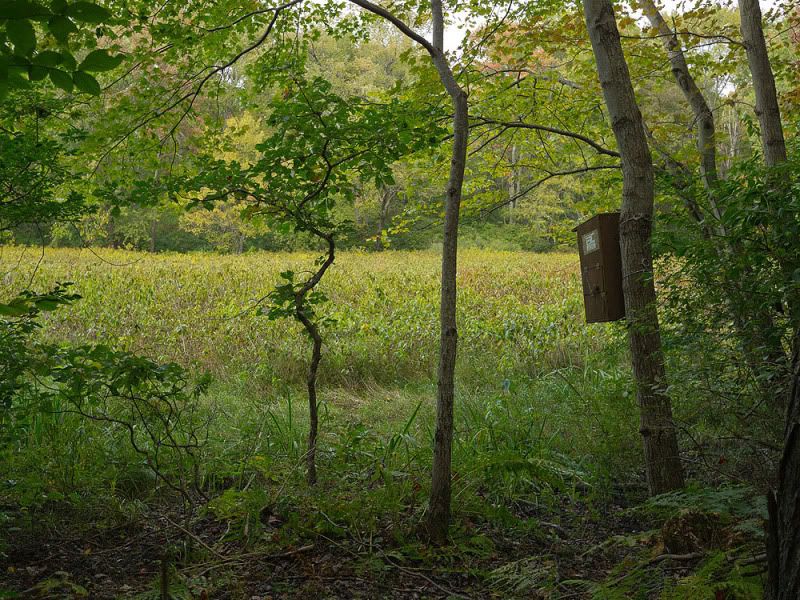
Duckbox on Frog Pond Way( Panasonic GH2, Lumix 20mm f1.7)
Here are some shots from my backyard, of the familiar shed I use as a target, again shot with the GH1 , GH2 and the same Lumix 20mm lens. I can’t say that there’s no difference, but certainly the difference in minimal.

Shed, GH2
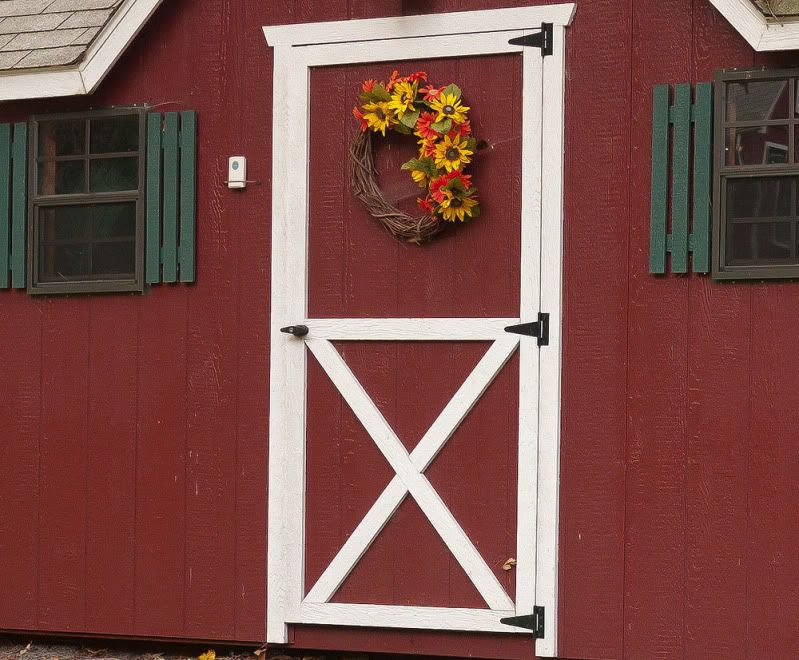
Shed, GH1
Another problem with the GH2 was the change in the control wheel between the earlier G series cameras and the GH2. The earlier cameras had the control wheel on the front grip, raised enough from the grip surface to easily utilize the push function of the wheel. On the new camera the wheel is on the back of the body, difficult to locate and nearly flush with the housing surrounding it. I found it much less intuitive and ergonomic.
Now I hear that the GH2 has much better video abilities compared to the GH1. This would be great, except that the latter camera already has better video than I really need right now.
So I packaged up the GH2, and sent it back to Amazon, long before the very generous 30 day return period expired. I could see no advantage to the product in my usual workflow.
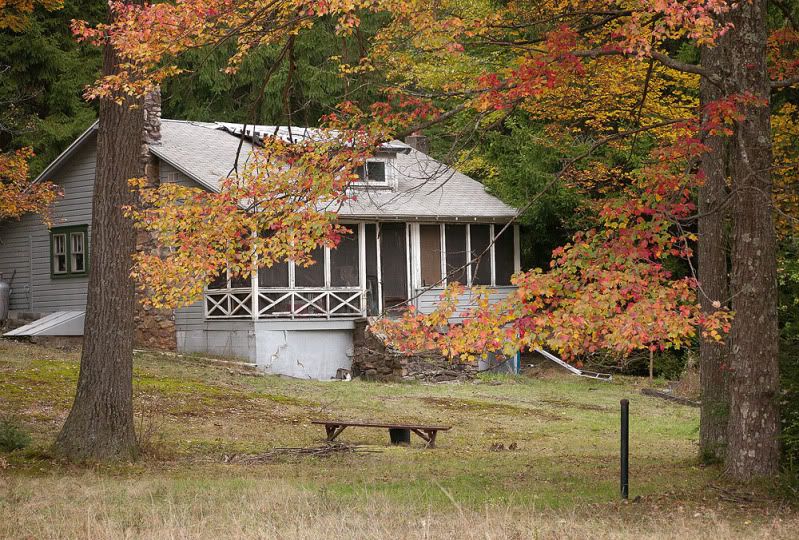
Pocono Cabin in late September ( Panasonic GH1, 45-200mm f4.0)
Now several weeks later, I see that OM-5s are becoming available body only. Looming on the horizon however is the Fujifilm XE-1 to use with an emerging system of great Fuji lenses.
No matter, because I still love to shoot the older Panasonic, perhaps even more now, having been exposed to its newer alternative.
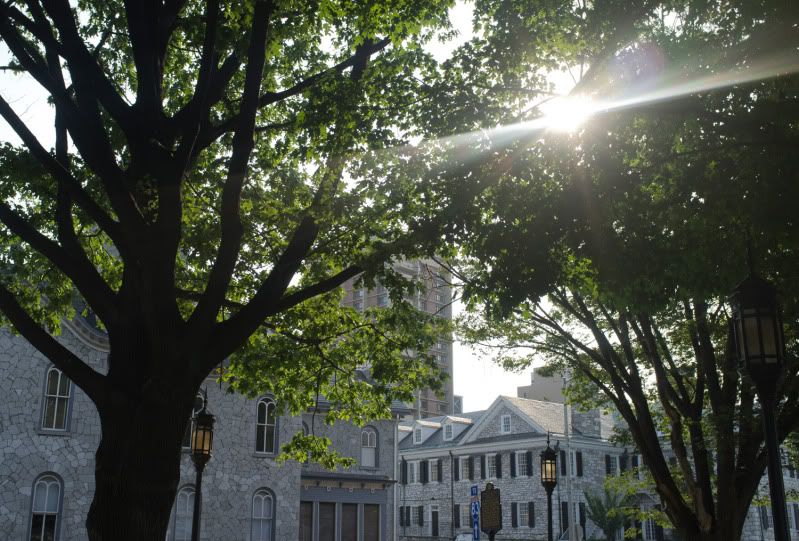
Front Street Summer Morning ( Fujifilm X100)
In the 1970s, a man by the name of Carroll Shelby went on sabbatical from his normal job, which involved promoting specially built high performance sports and racing cars, and developed a second passion into a nationwide following that persists to this day.
His passion was for the cooking of “Texas chili”, his enthusiasm led to scores of people discovering this passion within them,
Mr. Shelby has passed, but his legacy lives on, not only in the thousands of sporty cars that bear his name. It lives on, somewhat more obscurely, in an almost weekly ritual shared by of large groups of Americans, who packed their car with cooking utensils, and gather in cities and towns throughout the country, to cook chili, swap stories, drink beer, and, oh yes, to compete for the title of best chili. I was recently invited to attend such a gathering with award-winning chili cook.
Now I have always liked chili, and even fancy myself capable of producing a reasonable pot now and then. Then one day my friend Rich, or “Brooklyn” as he is known by his Pennsylvania friends(but probably not by his Brooklyn friends) explained to me, the art of competitive chili cooking. I realized pretty quickly, my own skills in that regard were at best, crude and unrefined. A couple of weeks ago he invited me to attend within a chili cook off in Harrisburg Pennsylvania, roughly 2 hours from my home. He actually suggested that I should cook of batch of chili on my own. I decided it might be better to watch one time and also to photograph the event.
I think I was right.

Salvation Chili (Fujifilm X 100)
This event was sponsored by the International Chili Society, a group founded by Shelby and his friends in Terlingua, Texas, in the mid 1960s. Their website is interesting reading, particularly the history of the society, which appears to have had a rather raucous founding in 1965.
It turns out, that the foodstuff that most people think of as chili, that concoction of ground beef, beans, chili powder and tomatoes is not thought of as authentic. The ground beef chili we know is referred to as “home-style”, and only recently has the ICS added a category for it in their judging. The traditional categories include “Texas Red” Chili Verde (green chili) and salsa.

The Teams Assemble (Fujifilm X100)
We arrived in Harrisburg around 8:30 AM. We were actually among the last to arrive slipping into the site next to Rich’s friend “Mad Mike”. Rich’s organization was impressive; we went from bare pavement to a functioning portable kitchen in about 15 minutes. The contestants sites varied in complexity from our rather unadorned workspace, to elaborately themed affairs designed to compete for the events “peoples choice” award.
We went to the organizers tent to register, received our sample cups, and various other premiums and souvenirs from the sponsors. Happily one of the sponsors was Miller beer who provided us each with a case of cold Miller light, that I noticed no one seemed to turn down.

Free T-Shirt (Fujifilm X 100)
I knew this was a good idea.
The rules of the ICS specify that all entries are produced on site in the time allotted (generally between three and four hours). Rich planned to enter a salsa, and a green and red chili and I watched with interest how he might accomplish this. He quickly cubed the beef and browned it, then chopped the peppers, tomatoes and onion for the salsa. Meat was then drained and dumped into the pots along with broth and pre-measured spices. Conspicuously absent from the pots were any form of beans, which are verboten in traditional chili entries. Even with no help from me (I did offer), Rich had the salsa done, and the pots simmering, in a surprisingly short period of time.
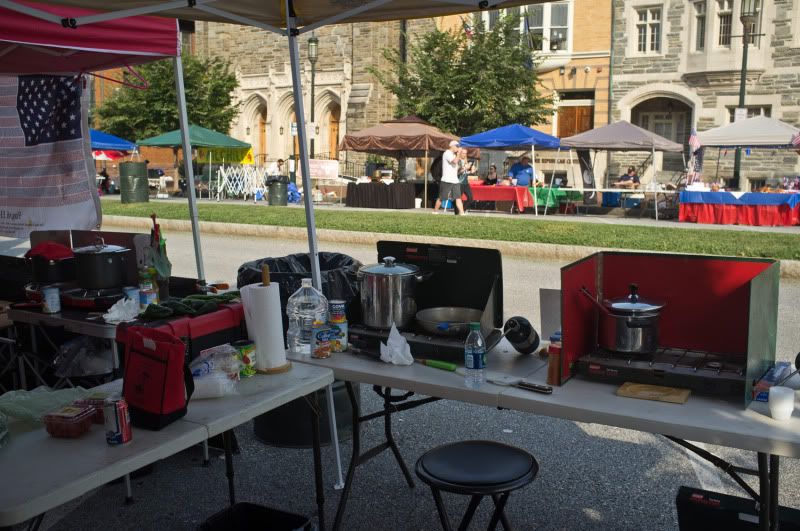
The “Set Up” (Fujifilm X100)
Though this was a competition, I was struck by the collegial atmosphere. People taste each others entries as they cook, loan each other supplies and spices, drink each others beer, and generally seem not overly concerned with the final results. From time to time one of the other contestants would gift us with novel snack food, generally involving things like peppers, bacon and cheese hot off their Weber grill. Two booths down was Trailer Trash Chili, a fellow entrant who fielded a veritable army of attractive young women in off-the-shoulder tee shirts and shorts to hand out home-style chili (and undoubtedly win votes for that “people’s choice” award).

Workin” the Crowd (Fujifilm X 100)
With all of this happening, I reached deep into the cooler for a cold beer and quickly decided that this was a truly pleasant afternoon.
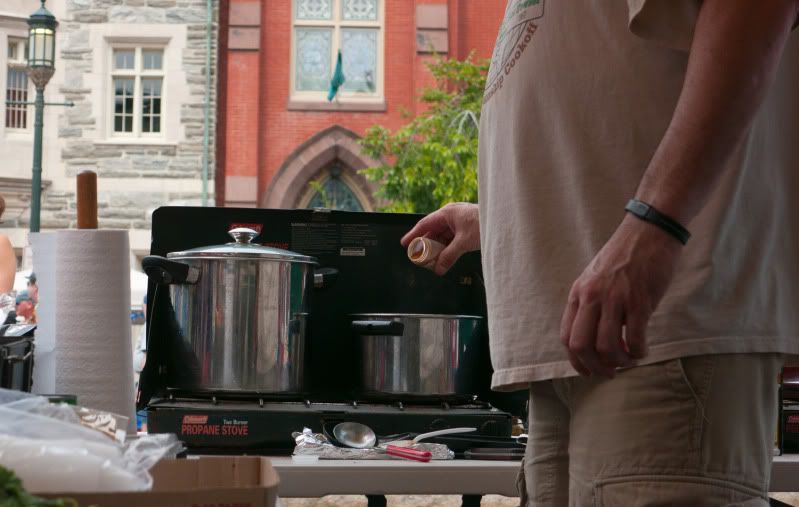
Just a “Dash” More (Panasonic Lumix GH1, Lumix 14-45 f3.5)
By Mid afternoon, all of our entries were in the judges hands. It was now time to visit the booths, and sample the various competitors’ efforts. Both the “reds” and the “greens” that I sampled had a definite commonality, but all were subtly different booth to booth. All had some “bite”, but none were particularly “hot” for fear of obscuring the flavors that they worked hard to develop. The best, particularly Rich’s and Mad Mike’s creations, had a robust texture, and offered a complex chili taste with just enough “kick” to induce a modest forehead sweat, after several spoonfuls.

Another Booth ( Fujifilm X100)
Our team fared a disappointing third for Texas Red, but Mike one first for his “Green” entry which, given the tasting I did, was an award well deserved.
My buddy Brooklyn wants me to enter at least one category on my next trip with him, perhaps next season. I think I just might. I’m less intimidated now that I have seen it done. Who knows, I might get lucky.

Mr. Lucky (Fujifilm X100)
Win or lose, I will be only too happy to participate in the festival of good fellowship, great food, good-looking women, and free beer that marks an ICS Chili event.
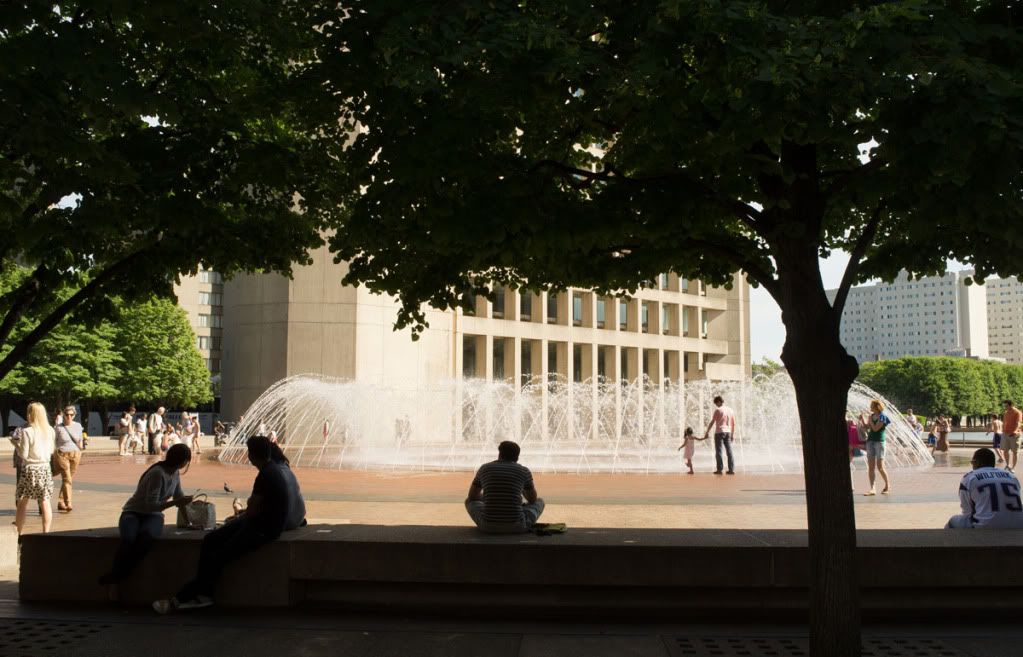
Boston Fountain (Fujifilm X 100)
Last year at this time, I was in the middle of a photographic slump.
I wrote about the problem here. In brief, I felt as though, at least in my usual haunts, I had captured everything photographable. This plus some environmental issues, rather drastically lowered my photographic output over the Summer of 2011. I began to wonder whether I was actually losing interest in photography.
This year it’s different. My interest in capturing images is back. And I hate to admit that I think it’s due to a new equipment purchase, in this case the Fujifilm X 100.
Roughly a month ago, I published my initial thoughts on the camera after several weeks of usage. I have now been carrying it for roughly six weeks, and I think I have developed a better sense of its strengths and weaknesses.
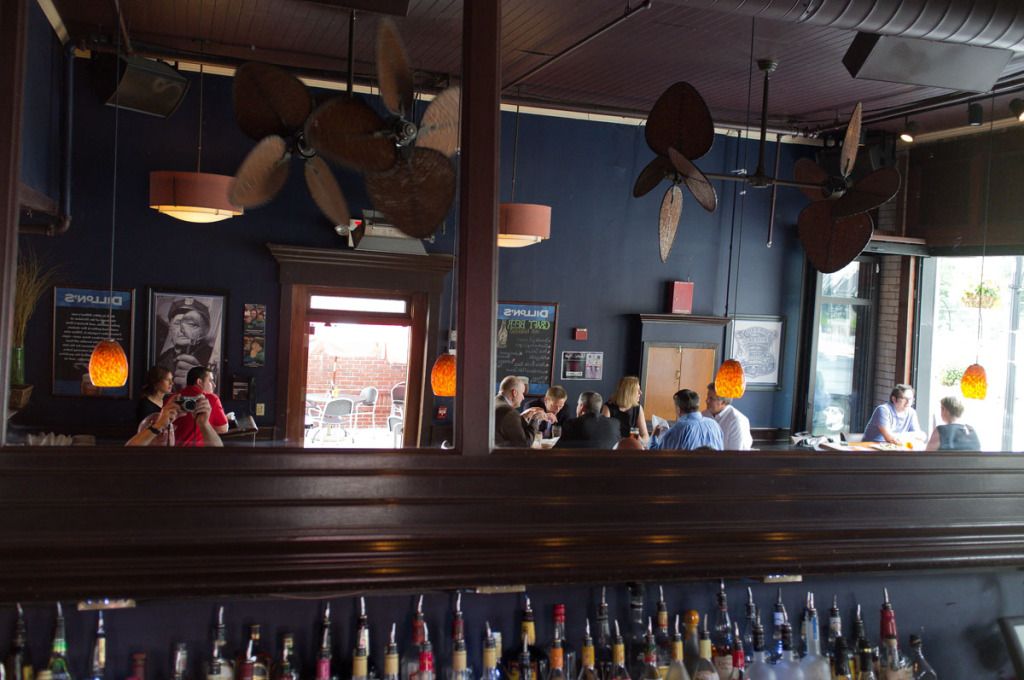
Dillon’s (Fujifilm X 100)
I do recognize that the novelty involved in any new equipment purchase, can reignite an interest in the activity connected with the equipment. But that increased enthusiasm can quickly flag, if the results one obtains do not reinforce the initial burst of enthusiasm. I do think of camera gear that I bought with great enthusiasm, only to be disappointed in the results. Actually, I made a new gear purchase early last summer. My disappointment with it probably added to my summer slump.
This year it’s different. I find myself looking for reasons to shoot with this camera. There is something liberating about are relatively compact and discreet camera that produces excellent image quality. My initial impressions of this camera have only been reinforced. It has excellent resolution. The combination of the excellent imager and the fine 35 mm equivalent lens produce rich detail which allows relatively generous cropping when necessary given the limitations of the lenses focal length. It’s not 24 mp, but it’s very adequate. Prints are gorgeous up to the 16”x 22” sizes my printers can handle.
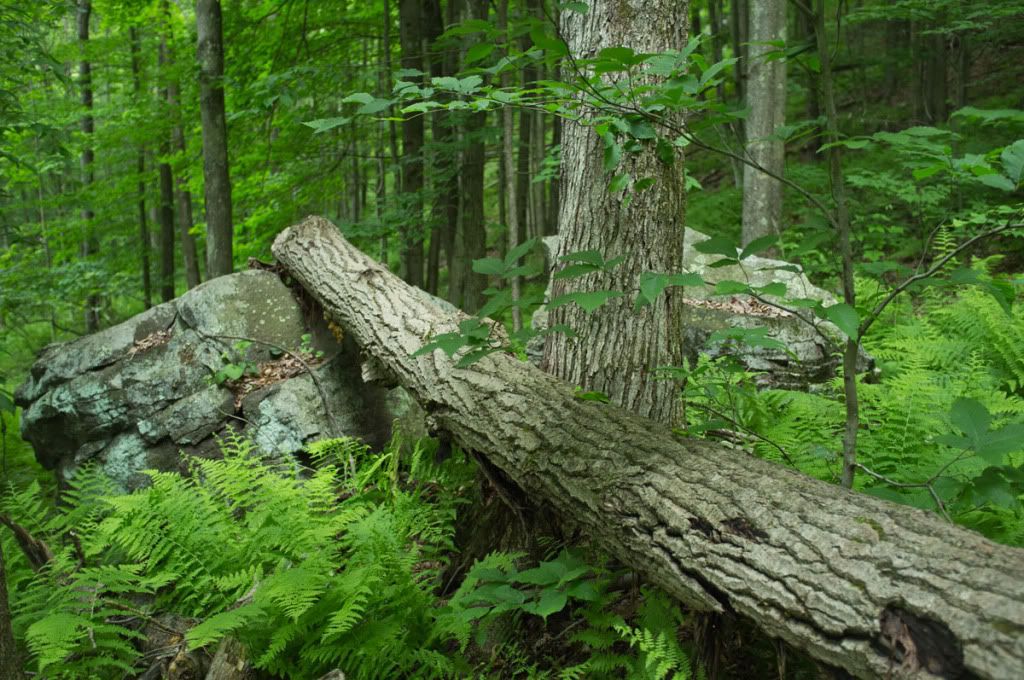
On the Skyline Trail (Fujifilm X 100)
I love the bokeh this lens can produce. I find it useful for both shooting portraits, and for landscape work, particularly in close quarters. At f2 the lens has excellent quality with great sharpness in the center of the field. Nonetheless, one still has the advantage of an APS sized sensor, which gives wonderful depth of field when stopped down.

Vintage Boots ( Fujifilm X100)
It’s low light capabilities continued to delight. I still have yet to take the camera off of the auto ISO setting. I have increased the minimum shutter speed somewhat to 1/60 to reduce motion blur during indoor shooting. I do love the low light capabilities of this camera. I continue to notice luminance noise at high ISOs, but it is relatively fine, and adds a charming graininess to the images especially when converted to black and white. There is very little color noise visible up to ISO 3200 if exposures are right.

Scituate Harbor at Dusk(Fujifilm X 100, ISO 3200)

I have been using the camera with the filter adapter permanently attached. I bought an inexpensive pinch cap to use on a daily basis, and I am storing the elegant magnetic lens cap so to avoid losing it. I would like to have it available at the point where I eventually sell the camera.
I wondered whether I would find the 35 MM focal length limiting. Certainly this is not a camera for sports photography, but when used as a “walk around” camera, I’ve not felt the least bit limited by the fixed lens. Other than cropping, there’s not much of a work around when one desires a longer focal length. A wider field of view however can be obtained by shooting several images of the same scene and combining them in a panorama which also gives you the advantage of higher resolution for printing.

Feeding the Pigeons (Fujifilm X100 cropped to 8.7 MP)
There are definitely some quirks to this camera that require a “work around”
It took me perhaps 5 minutes to capture the image below because I could not obtain an autofocus lock on the flowers in the foreground (the camera kept focusing on the tree in the background). I did find the manual focusing to be a bit problematic, in part because I had forgotten temporarily how to use the image magnifying feature. Most of the time however, the autofocus works fine. When it does not, it most often means that the focus selector button on the side of the camera has become inadvertently repositioned.
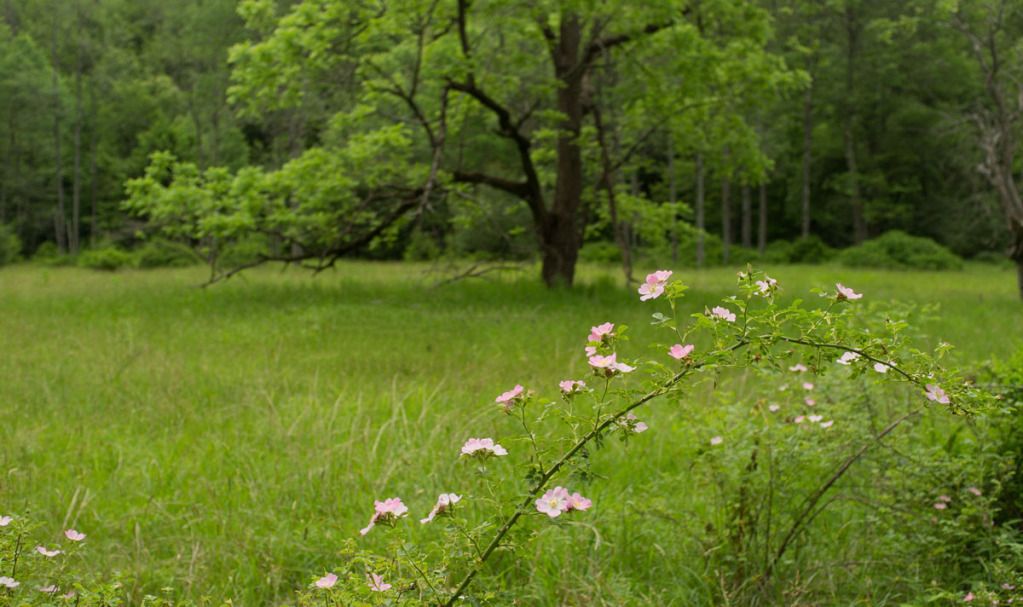
May-apple (Fujifilm X 100)
Dynamic range in RAW files is certainly adequate but less than my Fuji S-5. There is little retention of highlights; one is more likely to obtain additional information from the shadows, similar to the Nikon D 7000.
Yeah, I know that the battery life is not great. I also resent the point-and-shoot type battery life indicator which only warns you of impending battery failure about a millisecond before the power quits. Happily the batteries are cheap and of the same model used by my Fujifilm F31, so it’s not a problem to have several on hand.

Green Monster ( Fujifilm X 100, ISO 3200)
I’ve been trying to figure out why this camera makes me want to shoot again. It’s not nearly as functional and versatile as my Nikon DSLRs which have comparable or even better imagers. It’s only slightly smaller than my Panasonic GH-1 which at least as a landscape camera has roughly equal image quality. I have to believe that it has something to do with the quality of the files that the camera generates, which exhibit the rich color palette that I’ve come to expect from Fujifilm imagers. I think it’s also the characteristics of the lens that I discussed earlier in the article. I think also I continue to take tactile pleasure in the manual controls and the subjective feel of this lovely little instrument.
I was in a camera shop (remember those?) in Boston this week, and finally got to handle the X100’s bigger brother, the X Pro 1. I actually came away underwhelmed. It felt much less dense and thus, less substantial than the X100, as though the same components were placed in a larger “box”. There no diopter adjustment to the viewfinder, like that on the X100. The shutter on the X Pro 1 is significantly louder. And the difference that I’m seeing in the files is entirely the result of the newer cameras extra megapixels. And of course, the X Pro 1 with a lens, is twice the money of the X 100. For now, I’ll pass.

Boylston Pub ( Fujifilm X 100 ISO 3200)
I’ve been telling people who ask my advice about a camera purchase, that they should not favor cameras because of megapixel count or zoom range, as most often, in compact cameras, those features actually reduce image quality. I now realize that the X 100 is a strong validation of this concept.
This camera bodes well for Fujifilm, and I cannot wait to see what they give us as a follow on product. But for now, I’ll just keep shooting.
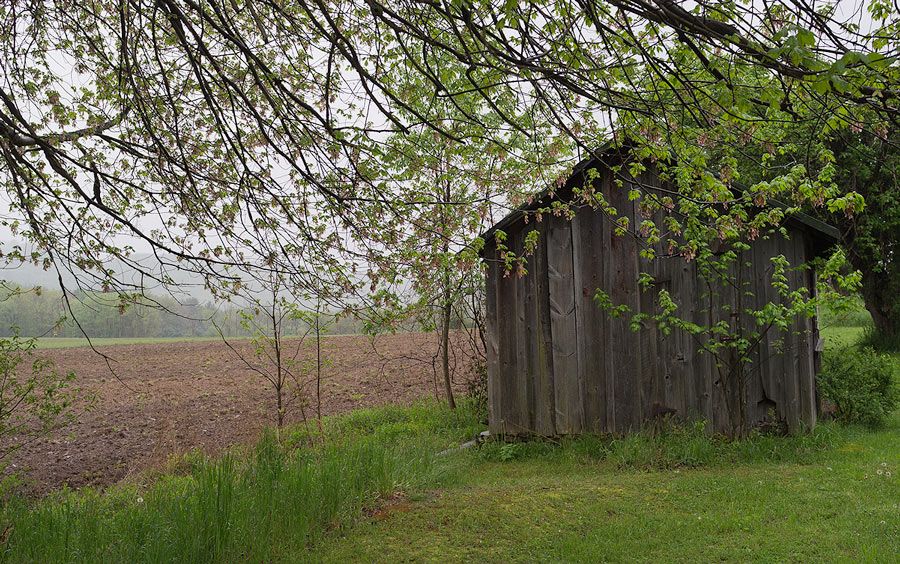
Spring Shed In Drums ( Fujifilm X100 ISO 200)
I’ve long been a fan of cameras made by Fujifilm.
My first digital SLR was a Fujifilm S2 Pro, which was a Nikon N 80-based film camera body, with digital elements “grafted” on. Compared to the better integrated Canon and Nikon digital SLRs, the Fuji was seen as a “frankencamera”, requiring two different battery sets to control its analog and digital functions. It was however during its time, quite popular due to two issues: number one, very high-resolution for an SLR at its price point, and number two, a characteristic color palette which accentuated reds and greens and was particularly flattering to skin tones.
The follow-up camera, the S3 Pro, which still resided within a Nikon body, cleaned up some of the dichotomy between the old film camera bits and the new digital workings within it. Now one set of AA batteries ran the entire camera. The S3 had another trick up its sleeve. It used two different sets of pixels to achieve very high dynamic range, designed particularly for wedding photographers who have to capture both the white gown of the bride, and the black tuxedos of the groom. Like the S2 before it, the camera was quirky and slow but was capable of producing images like no other. With Fujifilm cameras, it seems, you learn to work around the problems for the sake of the quality of the files you can produce.
I think that people and photographers that gravitate to Fujifilm pro-level cameras (Fuji point-and-shoot cameras are more normal in behavior) have a certain personality type. They will put up with indignities that no user of other mainstream camera gear would tolerate. They do it because they perceive something about the image files that they cannot obtain with other, more user-friendly gear.
With the demise of the Fujifilm DSLR bodies (the S 5 Pro was the last) I find myself shooting Nikon bodies which were, after all, the basis for the Fuji camera bodies. They inevitably have very competent, color accurate imagers. I love their ergonomics. I still have an S5 ,which lives in the body of a Nikon D 200, and shoot it occasionally, particularly for portraits. Unfortunately, the lack of resolution of this older camera is becoming more obvious as the years pass.
Now Fujifilm has history of building fine camera bodies (remember the Hasselblad X Pan?). So I watched with great interest as Fujifilm relaunched a new line of cameras, built entirely on their own, and designed for the enthusiast/professional market.
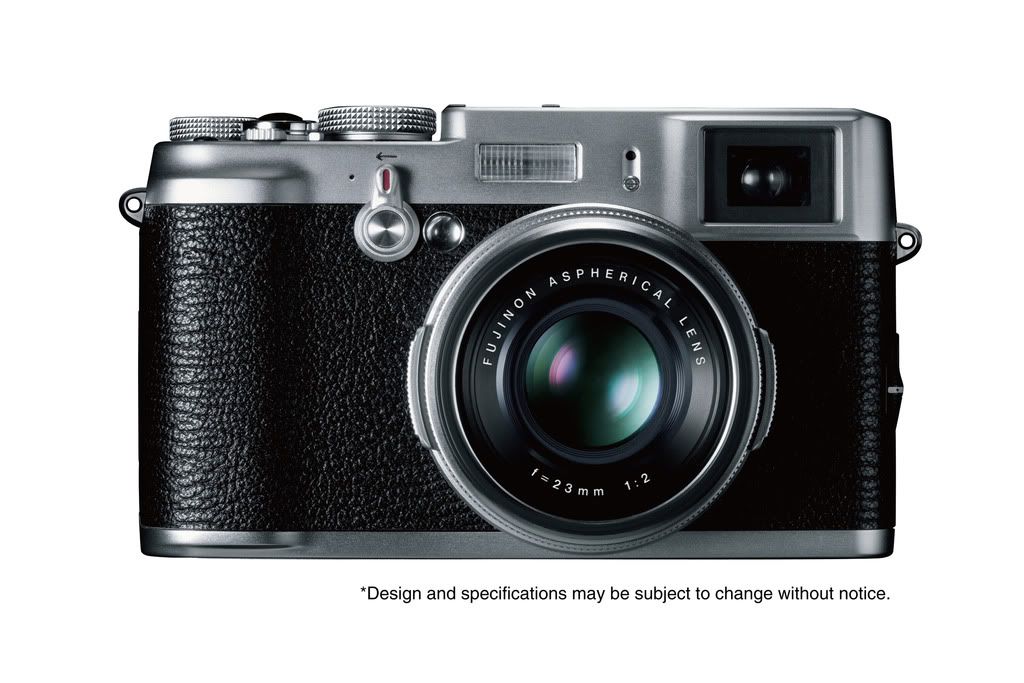
Fujifilm X 100 (image by Fujifilm)
This time the camera form was a range-finder-type camera body. I ignored the first version, the X100 as I thought its fixed focal length 35 MM lens would be too limiting. I started to pay attention when the X pro 1 was introduced, with a 16 MP imager and a new line of Fuji built lenses.

Fujifilm X Pro 1 (Image by Fujifilm)
The camera was relatively expensive, but far cheaper than the Leica M9 that it was designed in some ways to emulate. Finally it seemed I would complete my search for a small discrete compact camera with superlative image quality.
Then, in an article on the web, I saw a photo demonstrating the relative size of the X Pro 1 compared to other cameras, including its “little brother” the X100. It seemed to me, that I might just as well carry one of my DSLRs as the new Fuji given the relative sizes. I noticed in the same picture however, that the X 100 was quite diminutive. Given the reports of its stellar image quality, I thought it might be interesting to give one a try. I ordered one (along with an extra battery, the filter adapter, and lens hood) on the B+ H website, and in two days the package arrived in my office.
The packaging it arrives in sets a tone. Within the brown B +H box, surrounded by inflatable bladders, was a smaller Fujibox box, all in black. Within this are two other packages: one a very elegant presentation box which cradles the X100 on a black silk liner. This suggests a highly premium product, an impression I’m sure Fuji is trying for with this “X” product line.
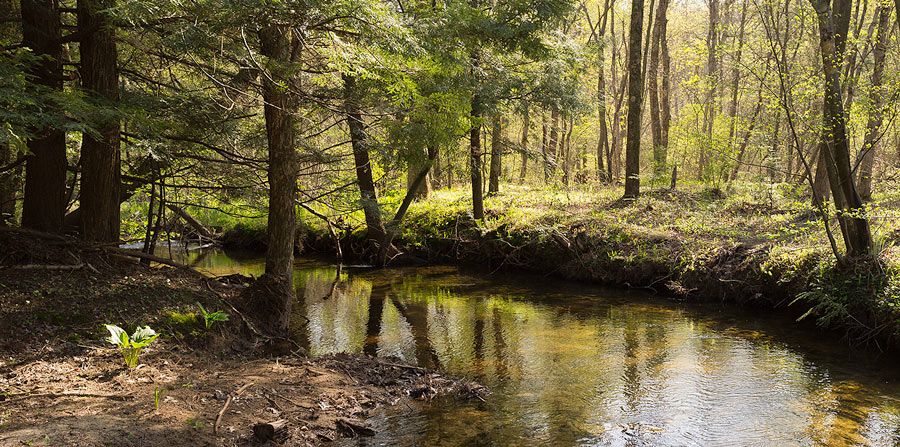
Along the Creekside Trail( Fujifilm X100 ISO 200)
The second box contains all the incidentals, such as the lens cap, the chargers, and the instruction disks and included software. The whole effect as much classier than finding the camera body wrapped in plastic and surrounded by Styrofoam in a plain cardboard box.
Handling the camera was a tactile pleasure. Even though I use professional level equipment, I was unprepared for the nice finish and unusual heft of the X100. The beautifully milled manual controls dials, and the classic design, all create an emotional first response from, ehem… “experienced” photographers. Given the comments and reviews I read about this camera, I had every hope that the quality of the presentation would be more than skin deep.
My camera came with an earlier version of the firmware than he is now current and I got a glimpse into some of the issues that frustrated early reviewers. For instance, though I’m no stranger to camera controls, but for the life of me, I could not find the auto ISO control which turned out to be in a separate part of the menu structure from the manual ISO control. (a problem fixed on the latest update)
I did shoot with a camera for a short time with the earlier firmware, but not enough to form any firm conclusions. I do believe the autofocus was less reliable before I upgraded the firmware.
Armed now with the version 1.2 firmware, I began to use the camera. Following the advice of several reviewers whose primary use for the camera was street photography (my intended use also) I set the camera to use the optical viewfinder (the viewfinder can also display an electronic, through the lens image), the focus point in the center of the frame, the lens on f2.2 and the and the ISO control to automatic allow me to drift between ISO 200, and ISO 3200 with a minimal shutter speed of 1/40 of a second.

Amber ( Fujifilm X100 ISO 3200)
I sought out several places where I knew the indoor light would be challenging, either because of high lights and shadows, or mixed color temperatures.

The Joes and Ed at the Ice House( Fujifilm X100 ISO 3200)
The X100 is an absolute delight when shooting indoors in natural light indoors. Even though it sports a smaller APS – C sensor, it has the among the best low light characteristics of any camera I own, challenging even my D700. Most often indoors, it defaults to ISO 3200. Still, even at F2.0 it delivers sharp detailed photographs with a very fine grain structure (mainly luminance noise with very little color noise) which can either be left in color, or converted to very nice-looking black and white images. It is the first camera I feel comfortable shooting, set on auto ISO.
I did notice when I move to bright light situations, the auto ISO does not always adapt down to lower values. This may have been some quirk because of how I set the camera up, but I’m watching this nonetheless. Luckily, the camera’s high ISO performance is good enough, that if this happens, you don’t necessarily ruin the shot.
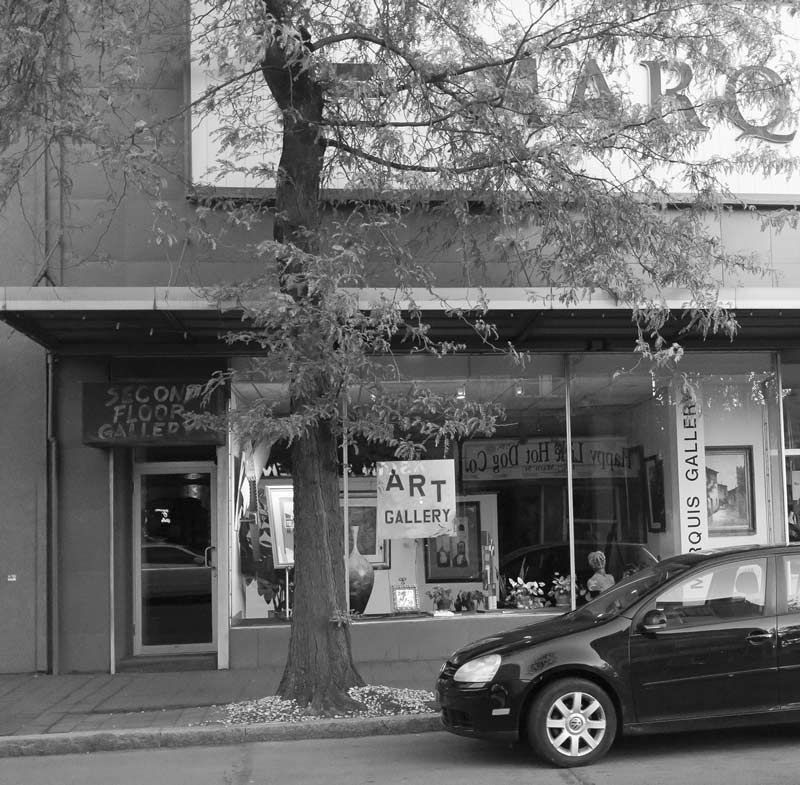
Marquis ( Fujifilm X100 ISO 3200)
So far, manual focusing seems somewhat difficult, due to the lack of a reliable focus indicator. The autofocus seems to work fine and reasonably reliably. If the little square in the viewfinder turns green and beeps, then generally the camera is correctly focused and the image will be sharp. Moving the focus point around the viewfinder is clumsy compared to the G-series Panasonics, for instance, where while looking through the viewfinder, you can easily activate and move the focus point only using your right hand.
On the X100, the activation button is on the left, and really requires you to take the camera away from your face to move focus. It’s a small issue for me but represents poor interface design. For this camera and it’s capabilities however, you adapt.
The parallax correction function on the optical viewfinder is interesting, but sometimes it’s easier on close-up images to quickly switch to the electronic viewfinder,which is quite good, and avoids having the right lower corner of the image blocked by the lens (particularly if the lens hood is in place).
I was curious about the resolution of the camera compared to others with a 12 megapixel sensor. The most comparable camera that I own is my Panasonic Lumix GH1 for which I have the 20 MM f1.7 lens, a somewhat similer equivalent focal length as the fixed Fuji lens on the smaller 4/3 sensor.
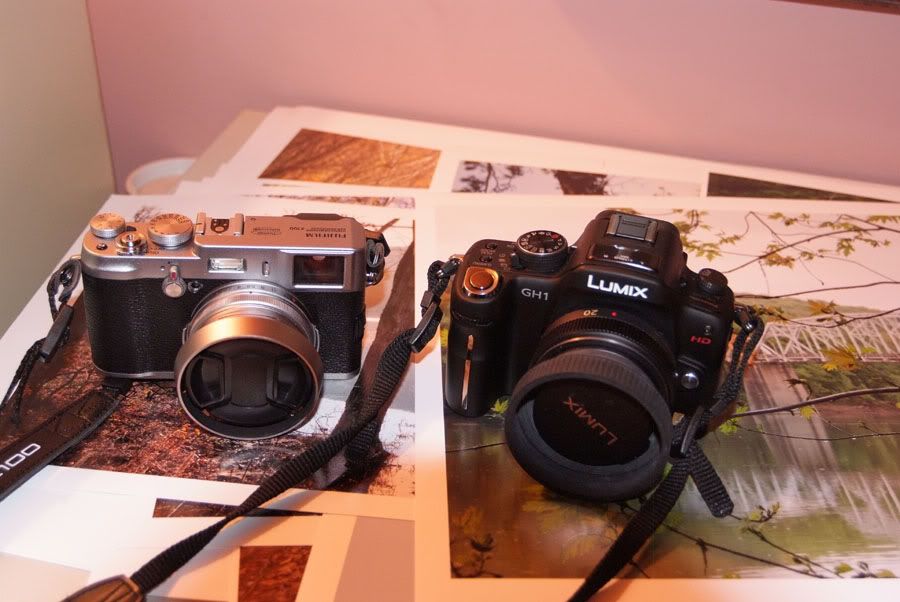
X 100 and GH1 (Fulifilm S5, Nikkor 18-35mm f3.5)
I know the GH1 to have high-resolution and an excellent metering capability though it is not the best choice for low light photography. Panasonic imagers also tend to have a green sensor cast which I usually correct during raw processing. I used my usual backyard scene and shot both cameras at their lowest ISO (200 for the Fuji, 100 for the Panasonic) the lenses were set at f5.6. This yielded slightly different shutter speeds for both cameras. In fact the first Fuji shots were rather under-exposed but then I noticed that I was using “average” metering. I switched theFuji to “multi” metering and the exposure became much more in line with what the Panasonic was doing.
Here are the comparison shots. I would say that on the main the resolution is roughly equal. I will say that the Fuji file is cleaner, even at the higher base ISO (check out the window glass). It is interesting that when I “pushed” the under-exposed Fuji file to equal the exposure of the appropriately exposed Panasonic file, the noise levels were quite similar. The Fujifilm image tends to be smoother and more “film-like” than the slightly harsher Lumix image.
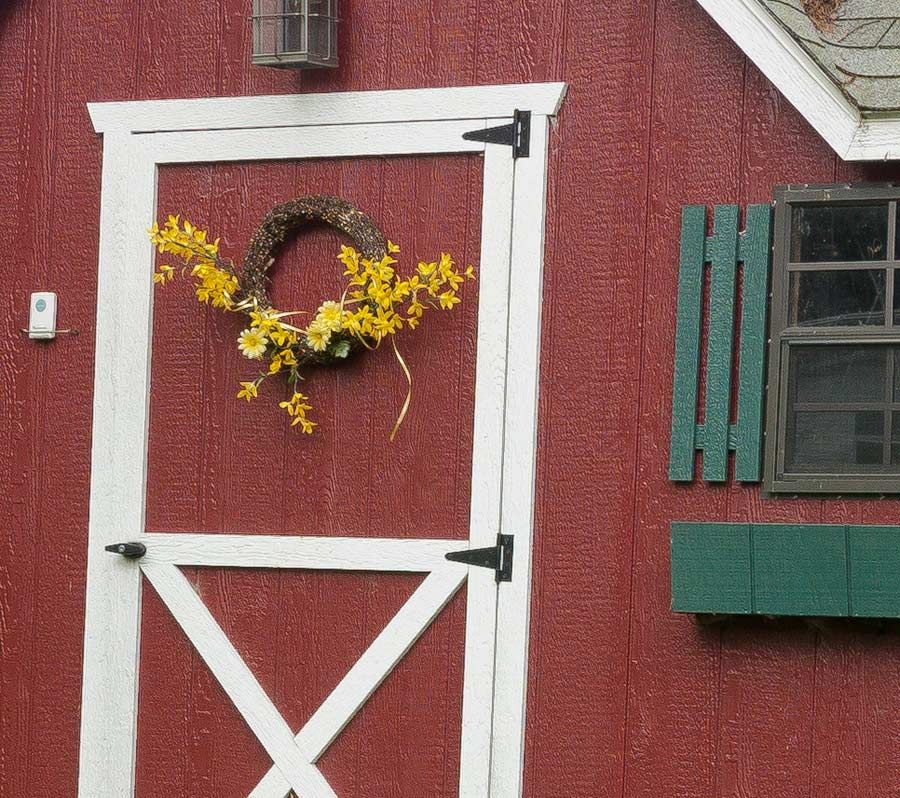
Shed 100% ( Panasonic GH1, Lumix 17mm f1.7)
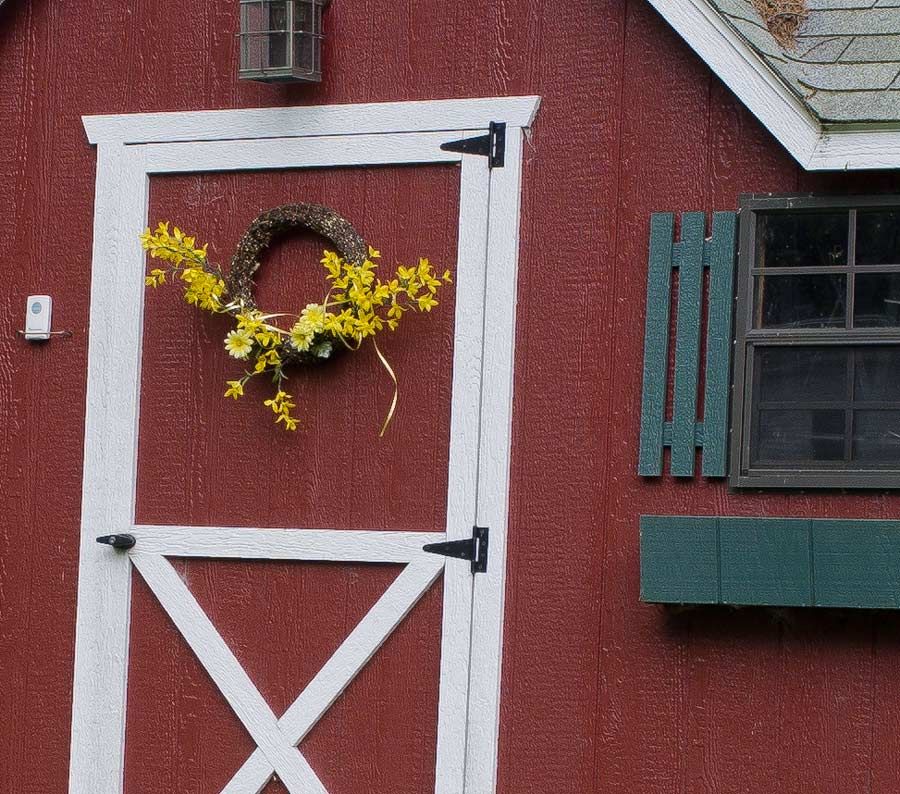
When I think of using the two cameras, I think of the GH1 as a better camera to take for instance, on a backpacking trip, where its small interchangable lenses would give it maximal versatility. It also has a much better user interface and better video capability, should that be necessary.
But there is just something about the Fuji. It is somewhat intangible, but the appearance of the files, the low noise levels, the excellent dynamic range, the feel of the camera in your hand, and yes even the quirkiness of the controls, give it an undeniable charm especially to a photographer of a certain age (like me). I love the quiet shutter, and how stealthy it is in a street shooting situation. And like all of the Fujiis I have owned, there’s something wonderful about the images that produces.
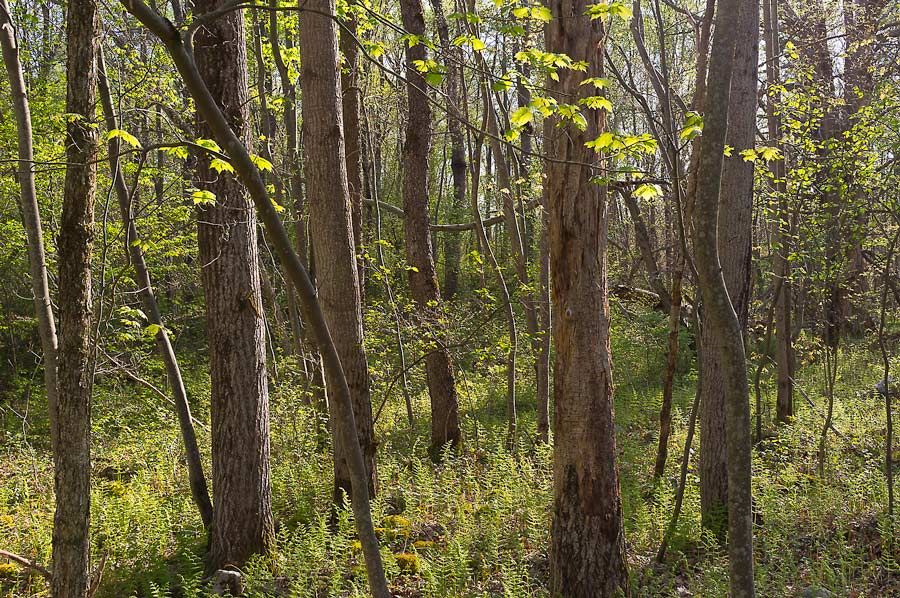
May Forest (Fujifilm X100)
So I guess I’m keeping this camera. The two week deadline for its return has passed and I’m still snapping happily away. It makes me think that the X Pro1 might be an interesting companion purchase at some point. For now however, the X100 makes me very content.
For the second part of this review, Click here.
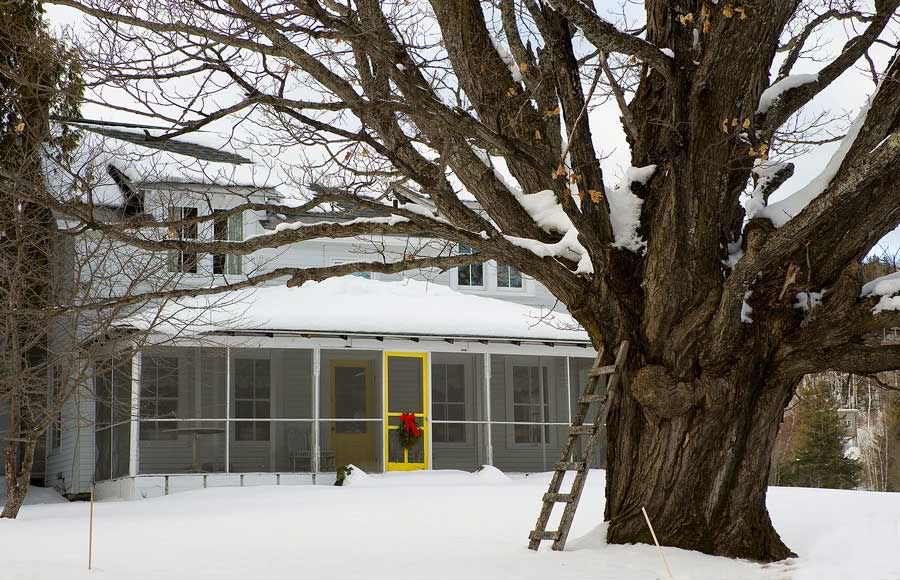
Yellow Door (Nikon D 700, Nikkor 35mm f2.0)
I am not a particularly good businessperson.
I run a solo medical practice which in these days is folly by definition. I do photography, and sell images off and on. I write a blog for free.
What I’m trying to say, is that I may not be the best person to criticize an iconic leader in photographic imaging like Nikon, in their business decisions.
But…. the web has created a forum for ill-informed and under-qualified people to comment on topics where they are out of their depth.
So here I go.
Nikon has introduced the long rumored 36mp FX format D 800. It is considered to be the replacement or upgrade for the for the 12 mp FX d700, still a favorite among working pros for its modest size and weight, robust body and weather sealing, great image quality, and wonderful low light capability. It‘s slightly crippled by what is now thought to be a limited frame rate of 4/second. The D800 will sell for around US$ 3000. As a landscape photographer, I may well buy one.
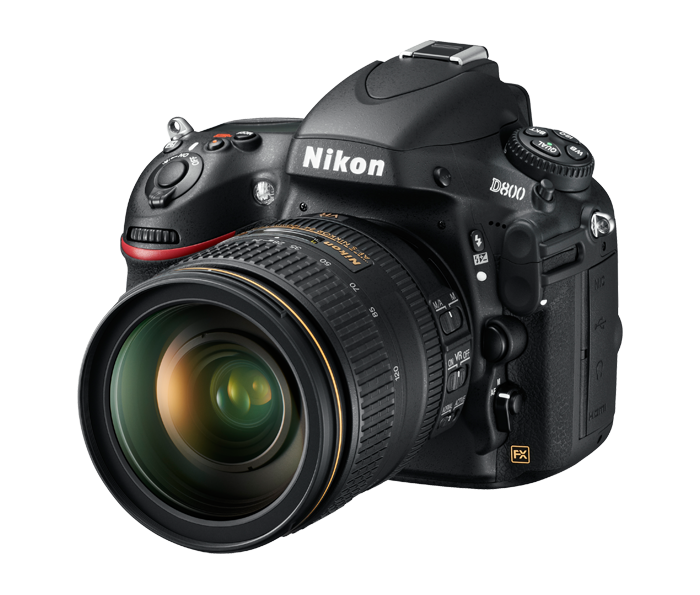
D 800 (photo by Nikon Imaging)
The physics of the D 800 sensor (pixel pitch) suggests that it will perform similarly to my DX format, prosumer D 7000. This is no bad thing, as I am rather happy with the files from that imager. The older D700 however has superior low light capability, overall cleaner images (megapixels aren’t everything) and more than sufficient resolution for most uses. Want to print 20″x 30″… not usually a problem.
Addendum: newer samples posted on the web suggest that the D800 high ISO capabilities may be equal to or at least approach the D700. If so, wow!
What I don’t understand is the logic of Nikon’s current model lineup.
The flagship Nikon supposedly is still the D3x, which at US$8000 and 24 mp, has 33% lower pixel count, roughly the same high ISO capability as the D800 (or maybe inferior) and is $5000 more expensive. The D3x has some advantages, such as a somewhat more robust build, vertical shooting position, and a longer shutter life, but the advantages don’t seem like enough to justify the price differential.
Announced right before the D 800, the D4 is a US$6000 FX 16MP rapid fire (11 frames per second) high-end body pro camera body (similar build to the D3x), which we assume will be very strong also in low light situations. It’s aimed at sport photogs and photojournalists.
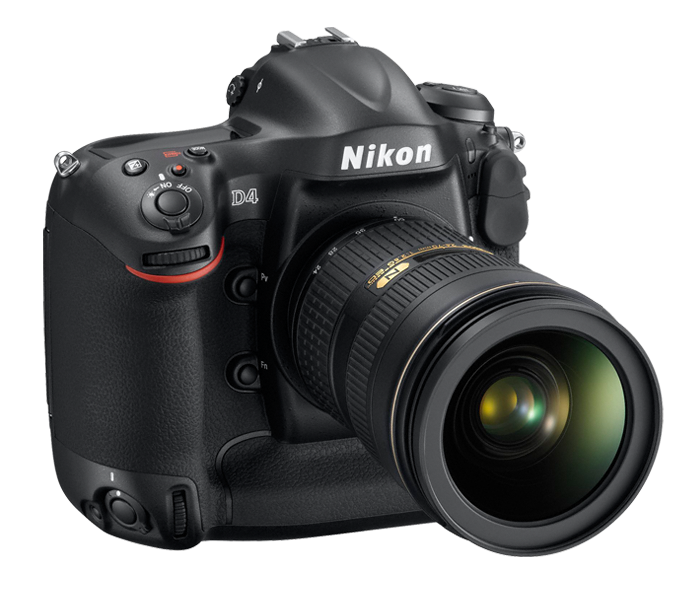
Nikon D4 ( Photo by Nikon imaging)
It has a new and very capable autofocus system (but the same as the D800). It has outstanding video features, which are also essentially identical to its significantly cheaper, higher-resolution and newer “brother
I “get” the concept of the D4. Resolution beyond a certain point isn’t that important, but for shooting sports, speed and autofocus is everything. The D800 frame rate is significantly slower.
I think of all the bodies in the Nikon lineup, the D4 is best tailored to for its intended use.
So why make the D800 36 MP? Why did they not recycle the D3x sensor, perhaps improved, but in the smaller body form of the D700 ( something like they did with the D3 and the subsequent D700), and save the 36MP sensor for a D4x? Who will buy D3x now? And just how many megapixels can we jam into an FX-sized chip before negatively impacting the file quality?
I do hope they will continue to produce a D700, or a similar body well into the future. May be there could be a D700s with the D4’s sensor.
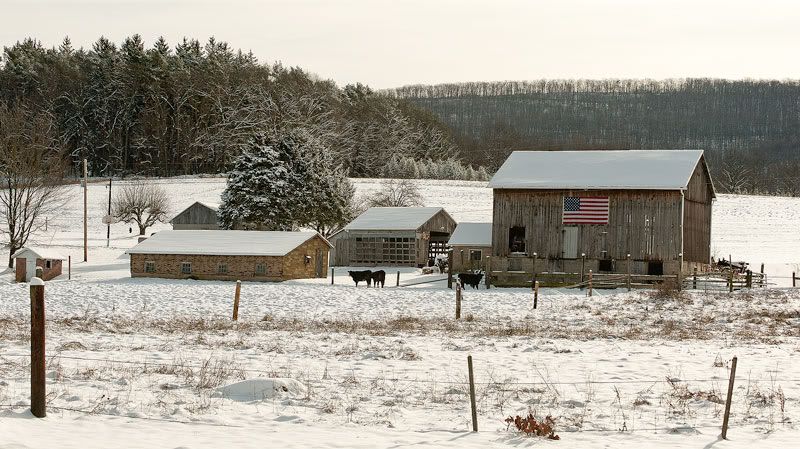
Dorrance Farm Morning (Nikon D700, Nikkor 35mm f2.0)
It is also worth considering that such high-resolution sensors require very high quality lenses, and very disciplined shooting techniques to exploit their full potential. This may be why Nikon realizes that the D4, the true working photographer’s camera, will be just fine with half the D 800’s megapixels.
The good news is that Nikon just put their highest resolution sensor, in a body I can probably afford. The bad news is that I may need to invest in even better lenses than I own, to make it work.
I might just rather have access to the D4 imager, at an even lower price.
I can do a lot with 16 million really clean pixels.
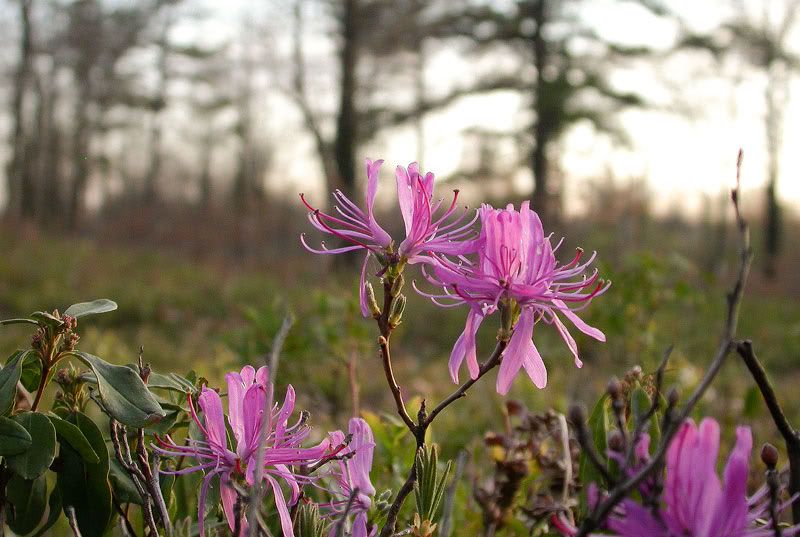
Rhodora (Nikon Coolpix 4500)
I have an image on my den wall of a rhodora bloom.
It is a flower that grows in the scrub oak barrens adjacent to my community here in Northeastern Pennsylvania. I have been told by naturalists that this is an anomaly, because it’s only supposed to exist much further north.
I shot that image with a 4 megapixel Nikon Coolpix 4500, which some of you may recall, was the final high-end iteration of the original twist body Coolpix. I have printed it at 8”x11” and larger, and love the image. It looks good to me even 7 years after it spit out of the Epson 2200 that I used in those days. And I have become very critical of images over the years.
Now I have owned a large number of compact and bridge cameras over the years. I printed and enjoyed many landscape images captured with non DSLRs in years past. Nowadays, I am somewhat unhappy with using a compact camera for this purpose, even the so-called “premium” compacts such as my Panasonic LX 5. I get many less images nowadays from small imager cameras that I would consider using, let’s say, in an exhibition, whereas in the past, I have used such cameras to confidently decorate gallery walls (and make sales).
Given some discussions I have been involved in various photographic forums, I have begun to wonder just how much better off we are , in terms of small-sensored cameras, than we were in the earlier period in the digital photography, when there were less pixels on small sensors than now.
I shot over the years with many “bridge” cameras in those days, sometimes side-by-side with DSLRs in the 6 MP range. My memory is, that whether it was a Nikon Coolpix, 900/4500 (3 and 4 megapixels respectively), my 4/5 megapixel Olympus E10/E20 or an Olympus C 5050, the files (I shot in those days mainly JPGs) were usable for landscape images, and that the images were pleasing to the eye, even printed at 11×16” or even occasionally at 13x 19”.
Now it seems to me small sensors seem lousy, not only relative to larger sensored DSLRs but even compared to older imagers with half the resolution. I can’t tell if I’ve become spoiled by the likes of my D 700, or whether packing those tiny sensors with as little as 10 MP is having a deleterious effect on certain, intangible measures of image quality.
Obviously, this discussion should be limited to base ISO. Even a 2/3” sensor such that came with the Olympus E 20, was horrible above ISO 200. A Canon S 100, LX5 and certainly the new Fuji X10, would wipe the floor with them at higher sensitivities.
But I do wonder whether there are other advantages of bigger pixels, even big old technology pixels, have characteristics that make up for the advances that have come since.

Boulder in Chubb Pond (Olympus C-5050)
This is a 100% crop of an image shot with my Olympus C 5050 from a kayak in 2004. It makes a nice 11’x 16’ print, like many others from that camera. And, it was shot in RAW at ISO 200, miraculous for a bridge camera of that era. My other cameras at the time included a Fuji S2 pro. I often printed and sold images from the Olympus, again limited somewhat in size relative to the Fuji. In this image I particularly notice the lack of noise, and reasonable detail.
Here are two images: one from my 2005 vintage Fujifilm E 900 which at the time was considered a marvel at high-resolution, High ISO (800 ASA max) shooting in a compact
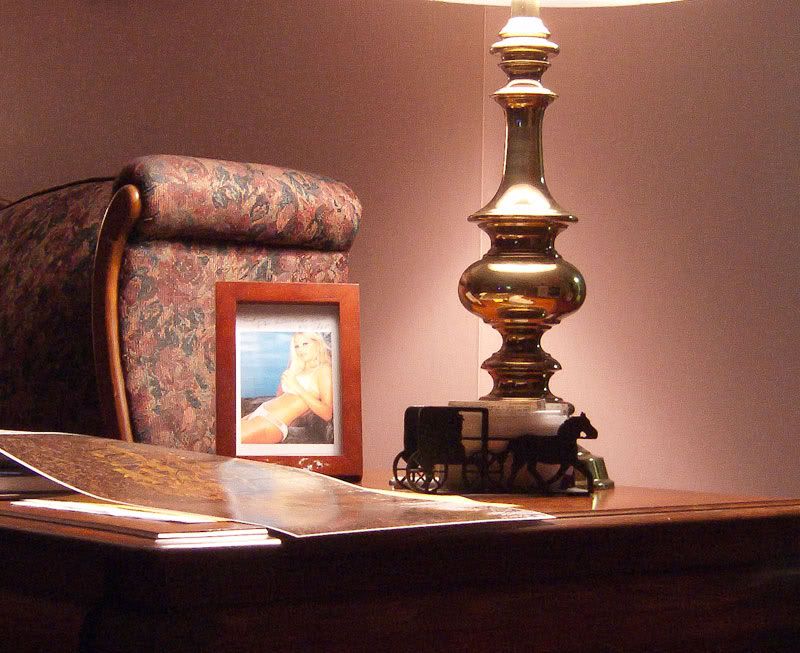
Test Image Fuji E 900
.
It sports the same size 1 1/6” inch sensor as the LX5 which I used to take the other image. These were shot at ISO 400 in raw format, had the same exposure settings at f4, were corrected with the same settings in ACR, and sharpened with the same unsharpen mask settings in Photoshop.
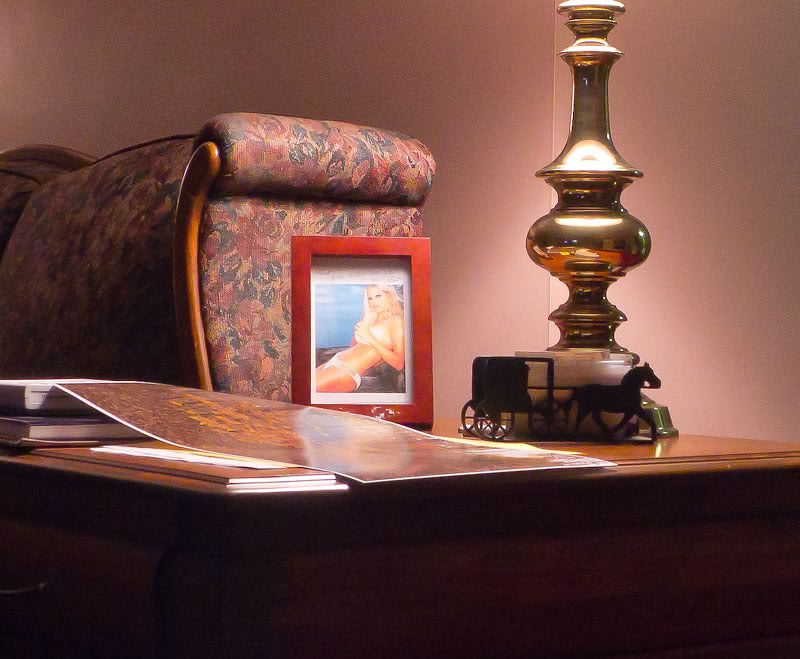
Test Image, LX5
I’m not saying that there’s no difference. I think the Fuji noise is coarser, and there could be a smidgen more color noise. Detail seems about the same. Now the E 900 sensor is 9 MP and of the so-called “SuperCCD” design, so famous in the F 30/31 Fuji compacts These were the cameras that arguably started the craze toward lower resolution, higher sensitivity sensors ( I still have one). I do feel however, that given the 5 years between models, the differences are modest. I’m pretty sure that the E 900 would compete nicely with many other modern imagers.
It should also be said the ergonomics of the LX-5 are significantly better than the older camera making it much more usable. Oddly enough the E 900 may have the first compact that disappointed me with it’s image quality (maybe because the size of the megapixels). I did get some keepers( see December 2013)
Now that having said all that, the Panasonic can render details nicely, if shot right. Here’s a 100% crop of an image I took with the LX5 recently, also at ISO 400 .
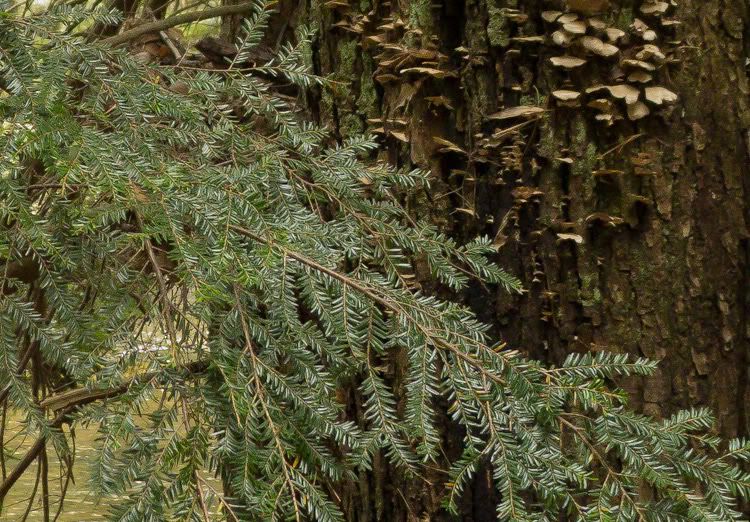
Hemlock and Bracken (Panasonic Lumix LX5)
What’s my point? I ‘m not sure there is one, except perhaps that as photo gear enthusiasts, we are seduced by the power of industry marketing, which is aided at times by enthusiast websites who are connected to photo gear suppliers. Imagers are getting better, but perhaps more slowly than we think.
If you’re going to buy a new camera or camera body, make sure it functions better for you. Test it against the gear it’s set to replace. If it’s not truly more functional, don’t be afraid to send it back. And make sure that you buy from reputable dealers that will allow you the privilege.
Also once in a while, If you have an older camera on your shelf, pick it up and shoot it. Print an image. You might be shocked just how much you like it.